From toddler-safe sensory zones to teen-friendly study areas, modern playroom design embraces flexibility without sacrificing style. Smart storage solutions keep chaos at bay while thoughtful layouts encourage independent play and creativity. Whether you're working with a dedicated room, basement corner, or shared family space, these ideas will help you create an environment where children thrive, explore, and develop essential life skills through purposeful play that feels like pure joy.
1. Montessori Learning Environment
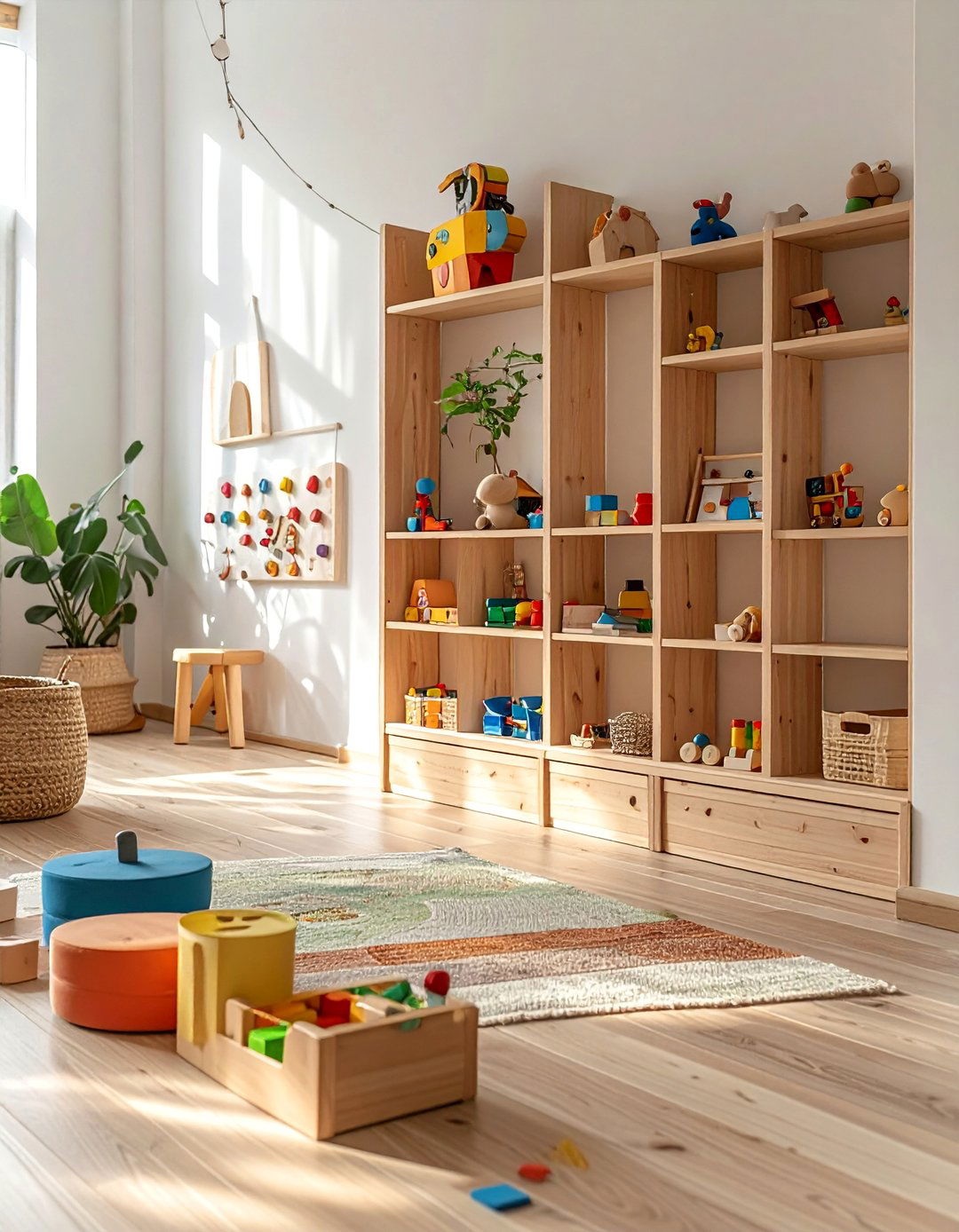
A Montessori playroom promotes independence through carefully arranged, child-accessible materials and furniture scaled to little hands. Low wooden shelves display educational toys, puzzles, and books at eye level, encouraging self-directed exploration and decision-making. Natural materials like wood, cotton, and metal create sensory-rich experiences while neutral colors maintain calm focus. Open floor space allows for movement and concentration work, while designated areas for practical life activities teach real-world skills. This thoughtful environment grows with your child, supporting developmental milestones through hands-on learning that feels natural and engaging.
2. Creative Art Station Zone
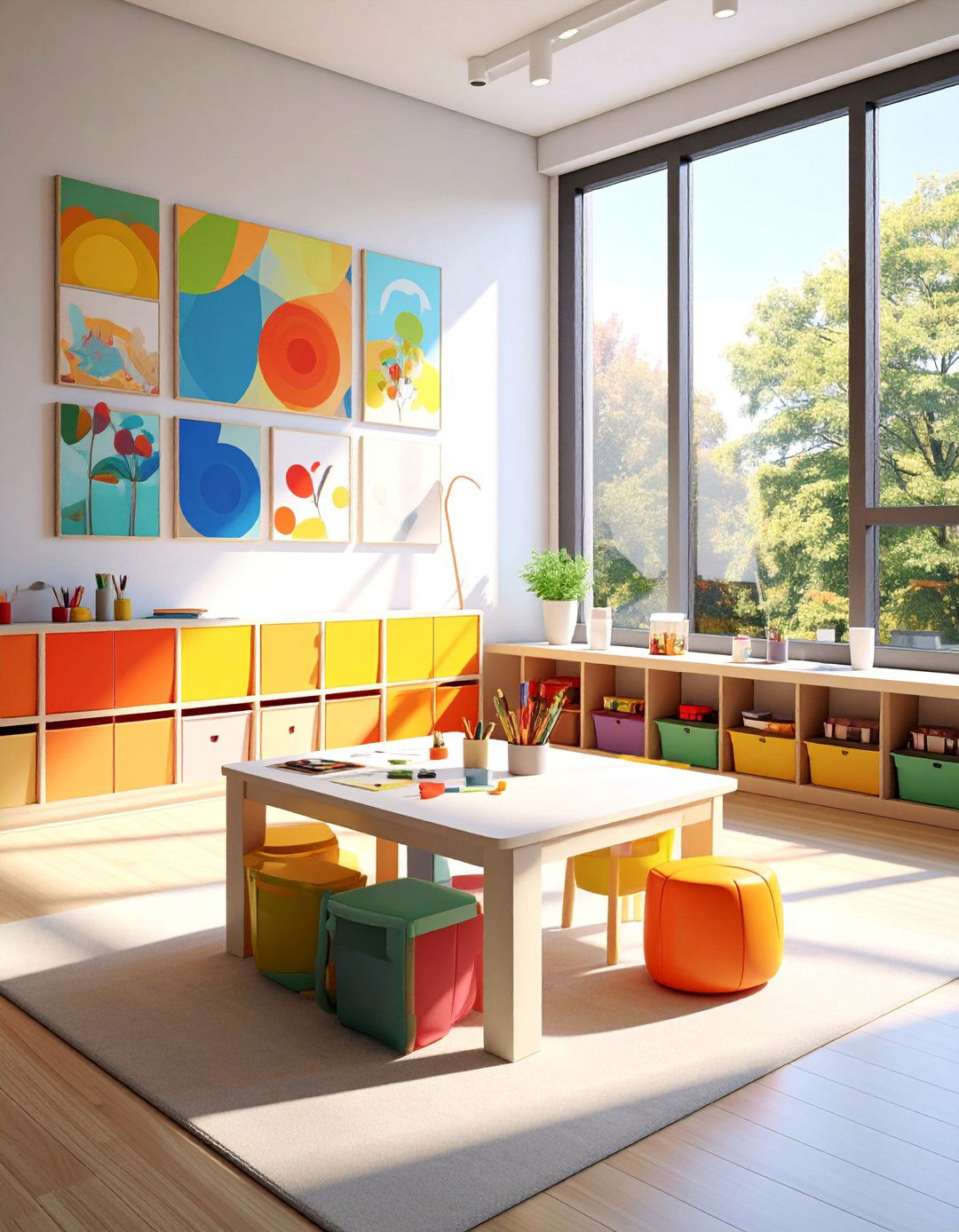
An dedicated art area unleashes your child's creative potential with organized supplies and inspiring workspace design. A low table with washable surface accommodates messy projects, while nearby storage holds crayons, markers, paper, and craft materials in clear, labeled containers. Does your little artist love trying new techniques and experimenting with different mediums? Wall-mounted paper rolls provide endless canvas space, and a display board showcases finished masterpieces. Good lighting and easy-to-clean flooring make this zone practical for parents while encouraging artistic expression and fine motor skill development through creative exploration.
3. Cozy Reading Nook
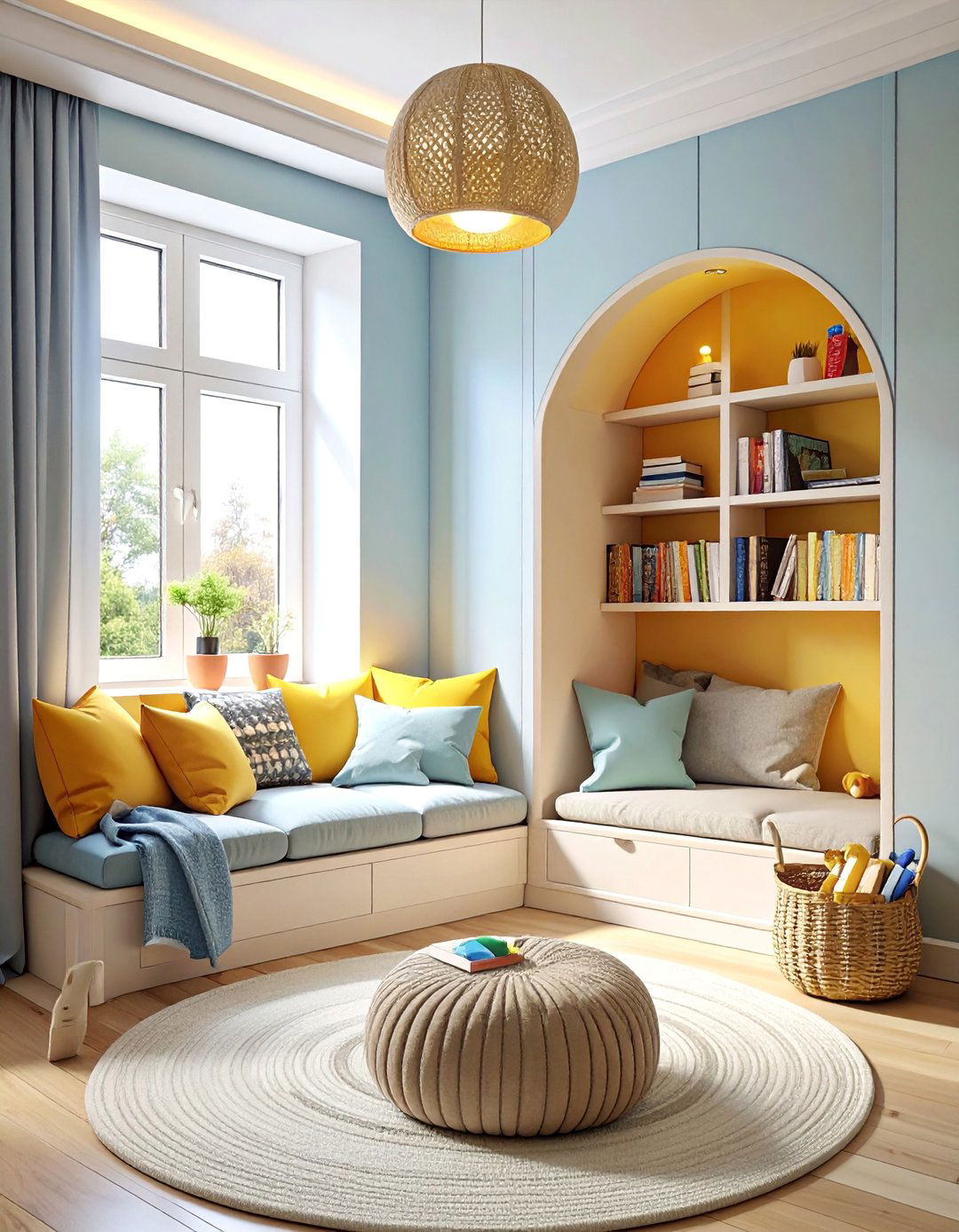
Transform any corner into a literary haven with soft seating, good lighting, and accessible book storage that invites quiet contemplation. Floor cushions, bean bags, or a small upholstered chair create comfortable spots for diving into stories. Forward-facing book displays showcase colorful covers that attract young readers, while a small basket holds current favorites within easy reach. Soft lighting from a table lamp or string lights creates ambiance perfect for bedtime stories or independent reading time. This peaceful retreat encourages a lifelong love of books while providing a calm space for emotional regulation and quiet play.
4. Active Play Physical Zone
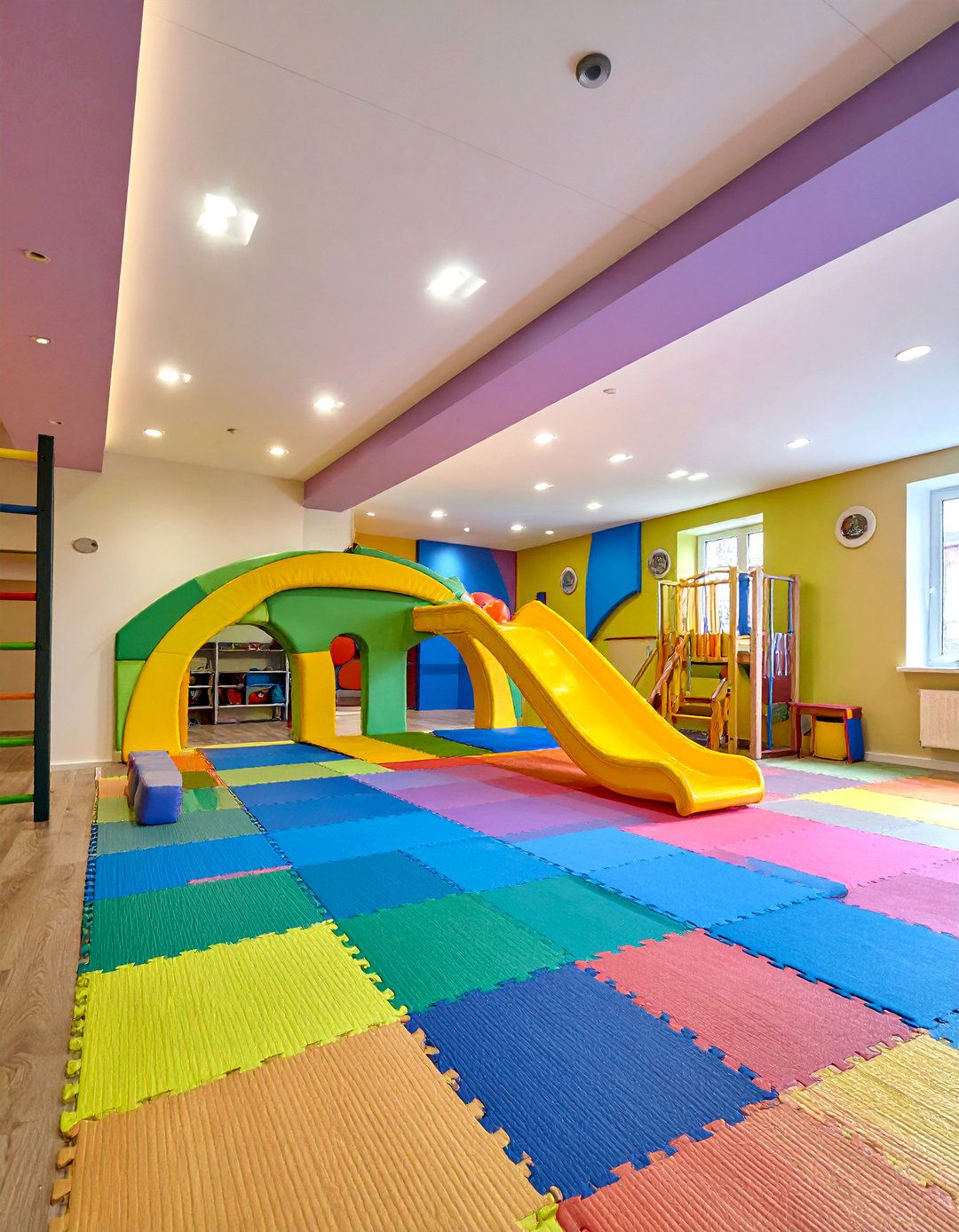
Children need space to move, climb, and develop gross motor skills through safe indoor physical activities. A climbing arch, balance beam, or small slide provides structured movement opportunities, while foam mats ensure soft landings during active exploration. What better way to burn energy on rainy days than with purposeful physical challenges? Tumbling mats create space for somersaults and stretching, while a small trampoline offers controlled bouncing fun. This zone supports healthy development through movement while teaching body awareness, coordination, and confidence in physical abilities that transfer to outdoor activities and sports.
5. Sensory Exploration Area
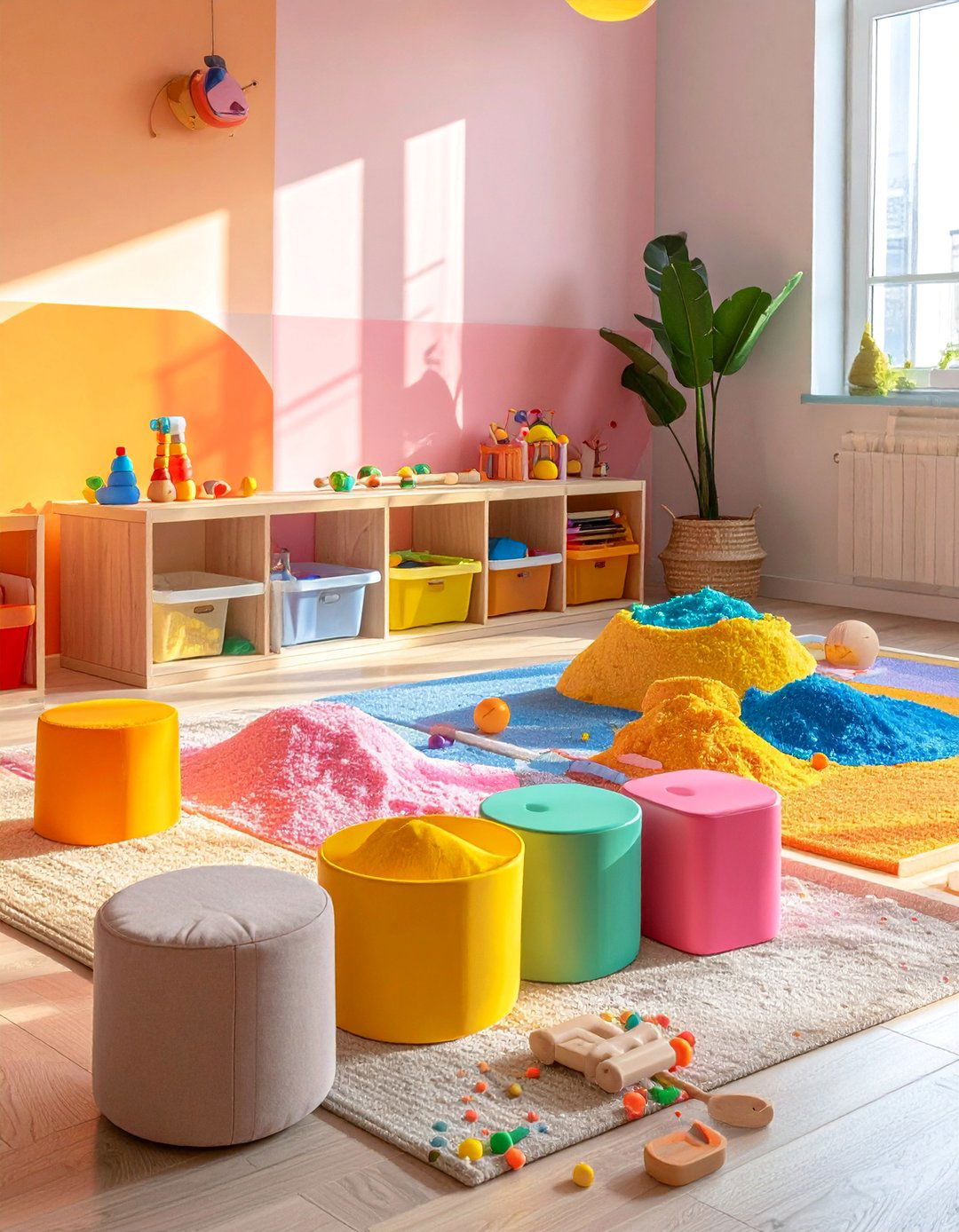
A sensory zone engages all five senses through carefully selected materials and activities that support neurological development. Textured bins filled with rice, beans, or kinetic sand provide tactile experiences, while musical instruments introduce auditory exploration. Scented play dough, essential oil diffusers, and taste-safe sensory materials engage smell and taste safely. Visual stimulation comes through light tables, prisms, and color-changing toys. This area particularly benefits children with sensory processing needs while providing all kids opportunities to explore their world through multi-sensory experiences that build neural pathways and cognitive understanding.
6. Building Construction Corner
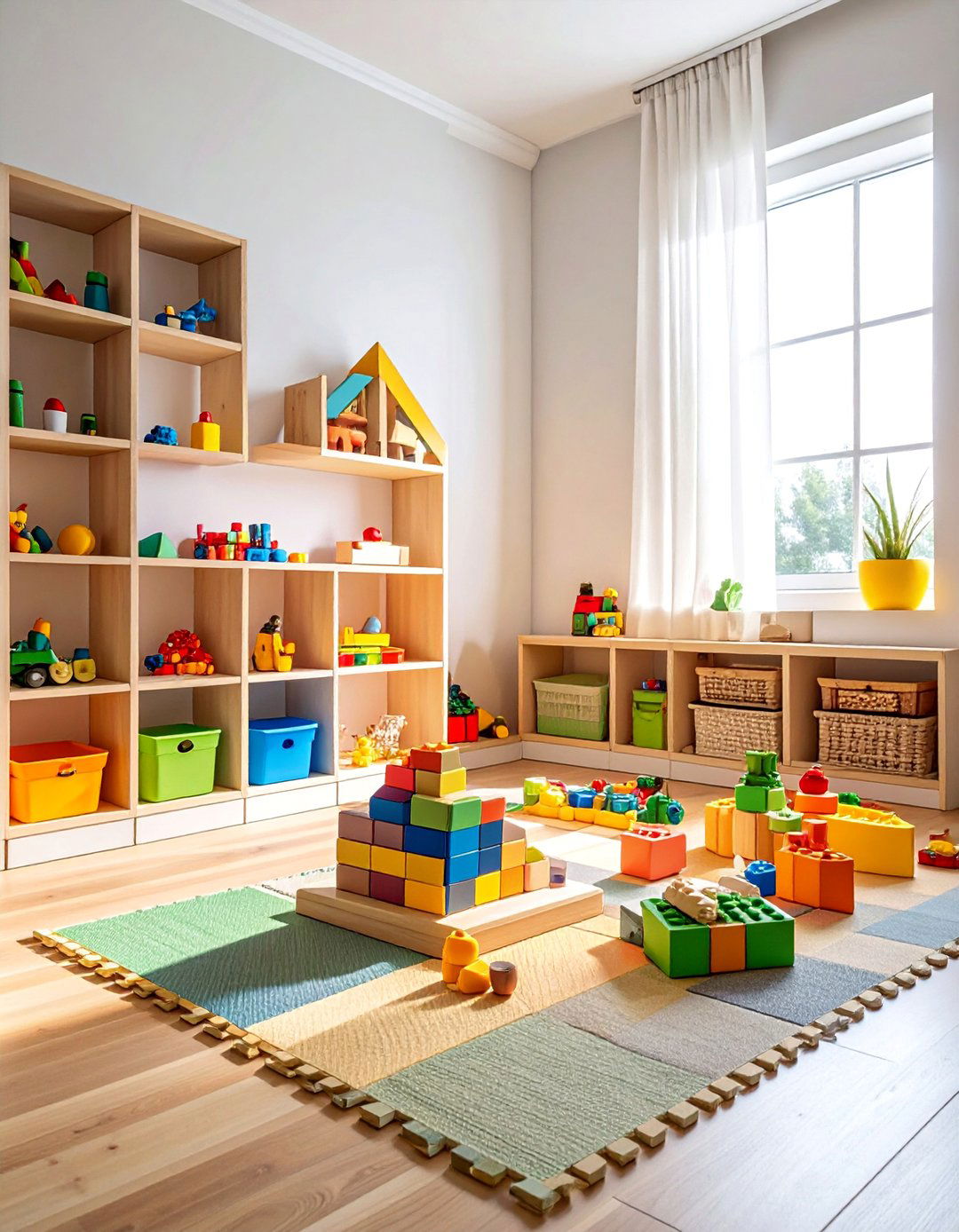
A dedicated building area with various construction materials encourages problem-solving, spatial reasoning, and engineering thinking through hands-on play. Large wooden blocks, magnetic tiles, and interlocking systems like Legos provide different building experiences for various ages and interests. Sturdy shelving organizes materials by type and size, making cleanup easier while teaching organizational skills. A building mat or designated floor space contains projects and defines the work area. This zone grows with children from simple stacking to complex architectural creations, supporting STEM learning through playful exploration and creative construction challenges.
7. Dramatic Play Theater
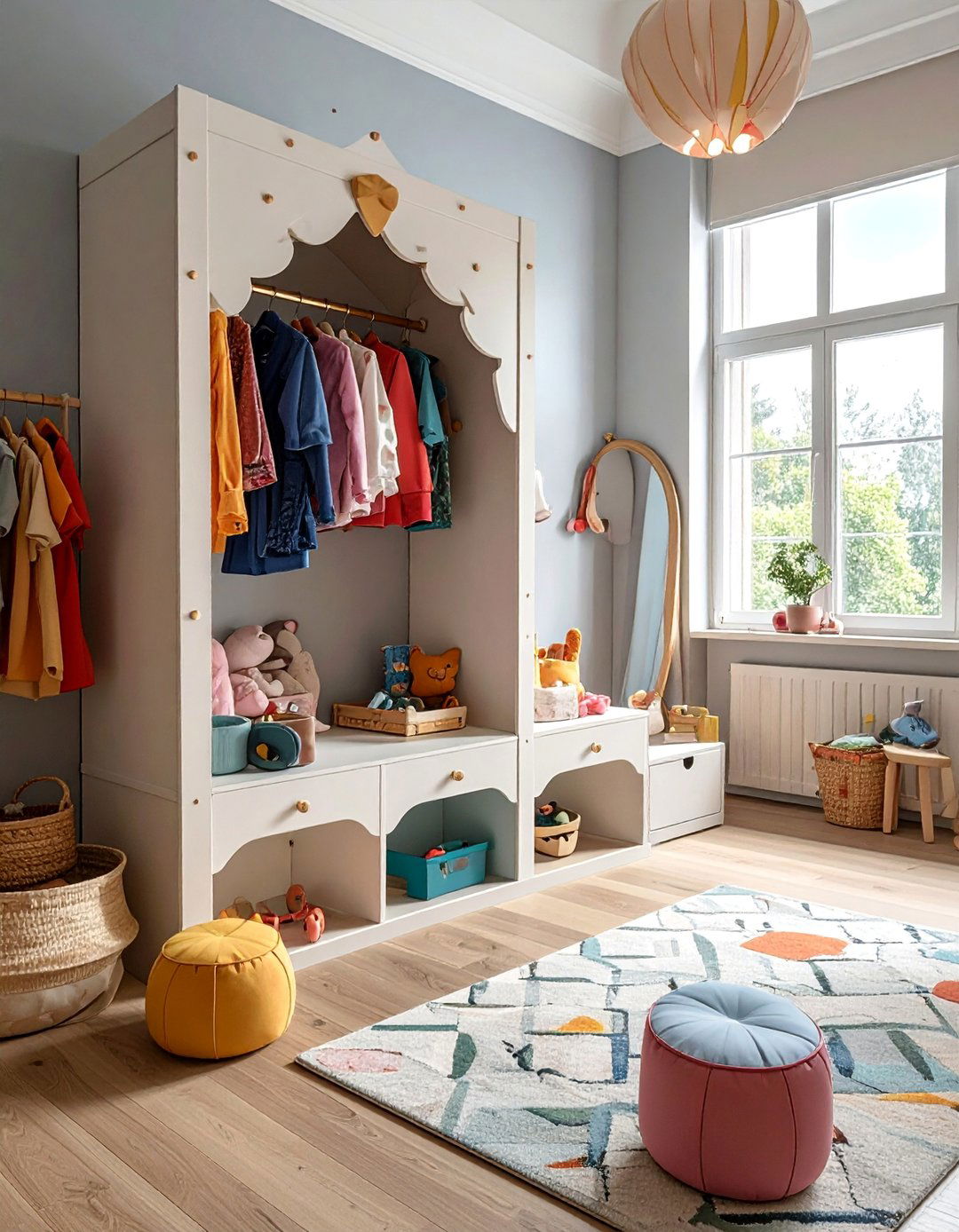
A dress-up area sparks imagination through role-playing opportunities that develop social skills, language, and emotional intelligence. A costume rack holds various outfits, hats, and accessories for transforming into different characters and professions. Have you noticed how children naturally gravitate toward pretend play as they process their understanding of the world? A small mirror allows costume admiration, while prop bins contain items for specific scenarios like doctor, chef, or superhero play. This area encourages storytelling, cooperation during group play, and confidence building through creative expression and character exploration.
8. Nature Discovery Space
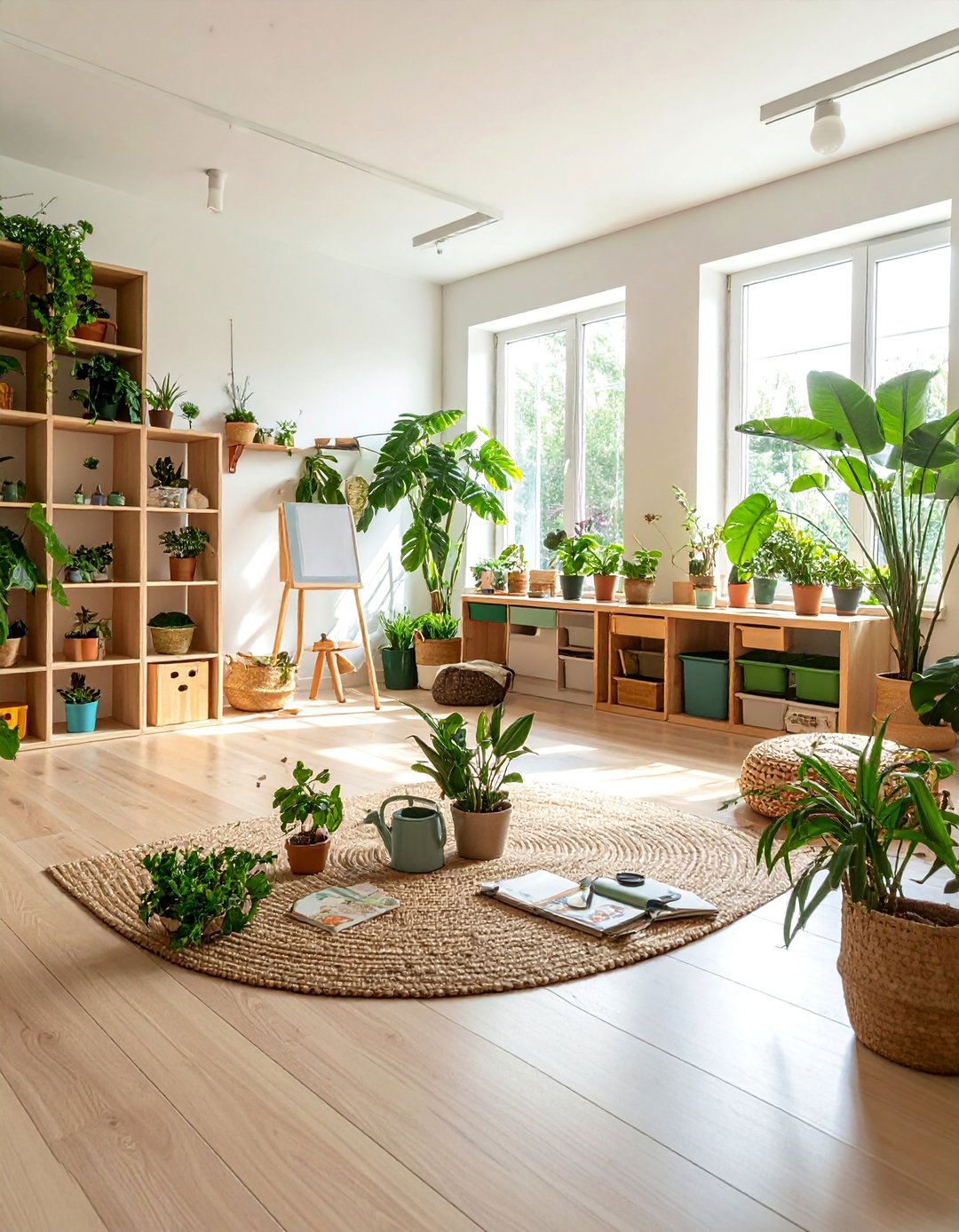
Bring the outdoors inside with a nature-themed area that connects children to the natural world through exploration and observation. Living plants teach responsibility and life cycles, while nature collections display shells, rocks, leaves, and other treasures. Magnifying glasses, nature guides, and observation journals encourage scientific thinking and documentation. A small watering can and gardening tools support plant care activities. This space fosters environmental awareness, scientific curiosity, and respect for living things while providing calming green elements that support emotional wellbeing and connection to the natural world around us.
9. Musical Expression Studio
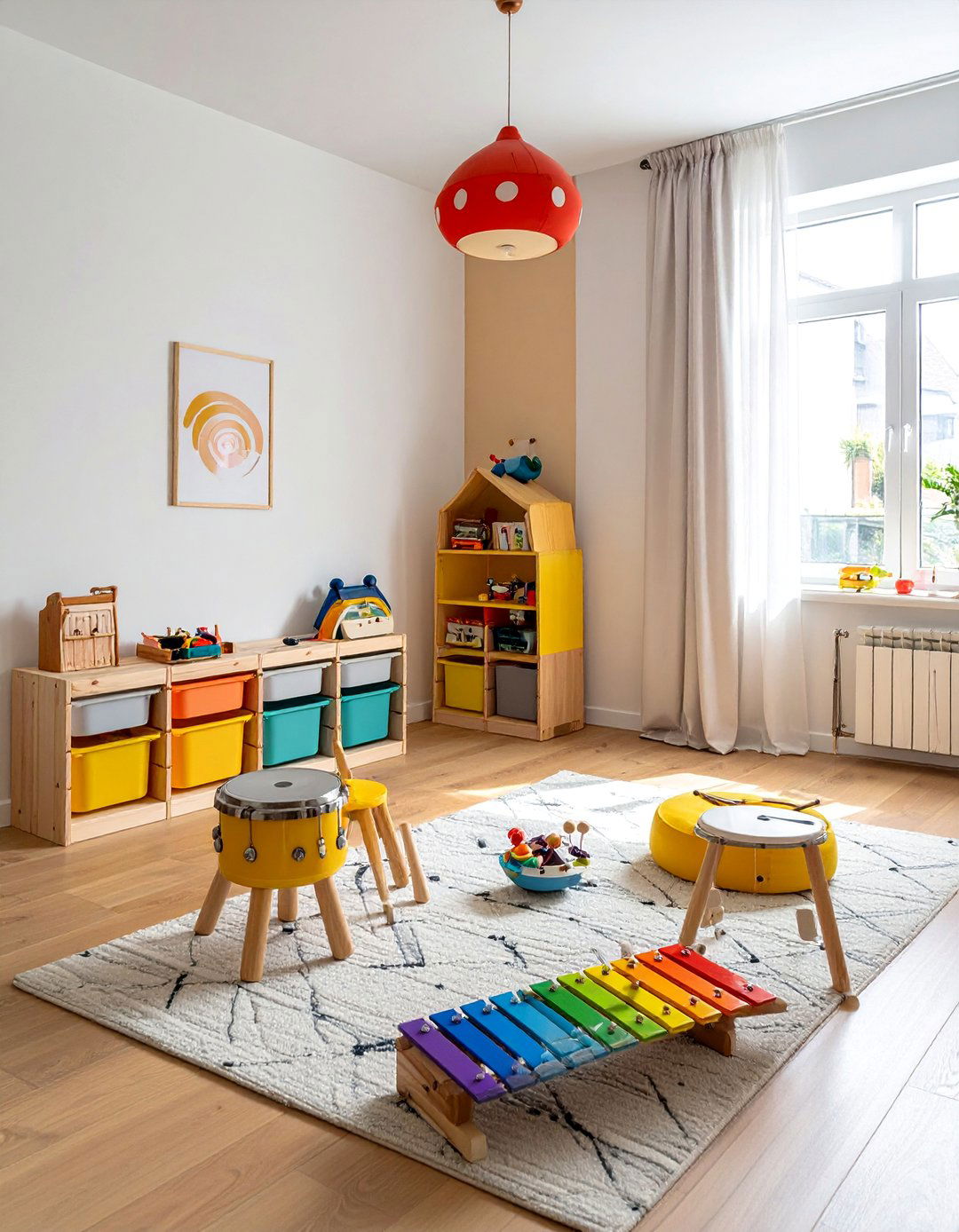
A music area introduces rhythm, melody, and sound exploration through age-appropriate instruments and listening activities. Simple instruments like shakers, drums, and xylophones allow experimentation with sound creation and rhythm patterns. A music player with children's songs, classical music, and world music expands auditory experiences and cultural awareness. Storage for instruments keeps the area organized while making music accessible for spontaneous creative sessions. This zone supports auditory development, emotional expression, and cognitive skills while introducing musical concepts that may spark lifelong interest in music education and appreciation.
10. Science Discovery Lab
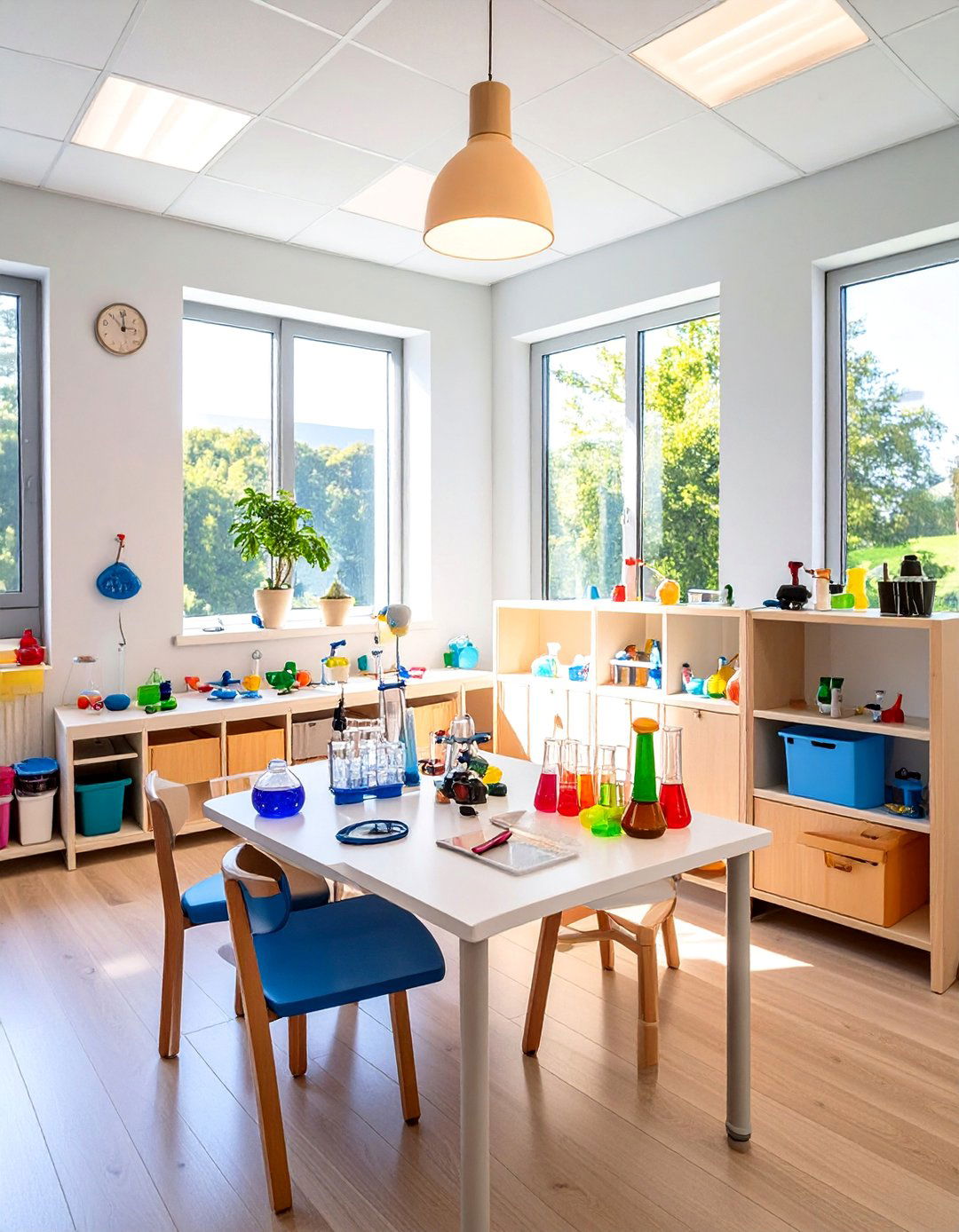
Transform curiosity into learning with a hands-on science area equipped for safe experiments and exploration activities. Clear containers hold materials for simple experiments, while magnifying glasses and measuring tools encourage observation and documentation. What happens when you mix colors or watch plants grow from seeds? Age-appropriate science books and experiment cards provide guided activities, while a small table offers workspace for investigations. This area develops critical thinking, observation skills, and scientific reasoning while making learning fun through discovery-based activities that answer the endless "why" questions children naturally ask.
11. Quiet Contemplation Retreat
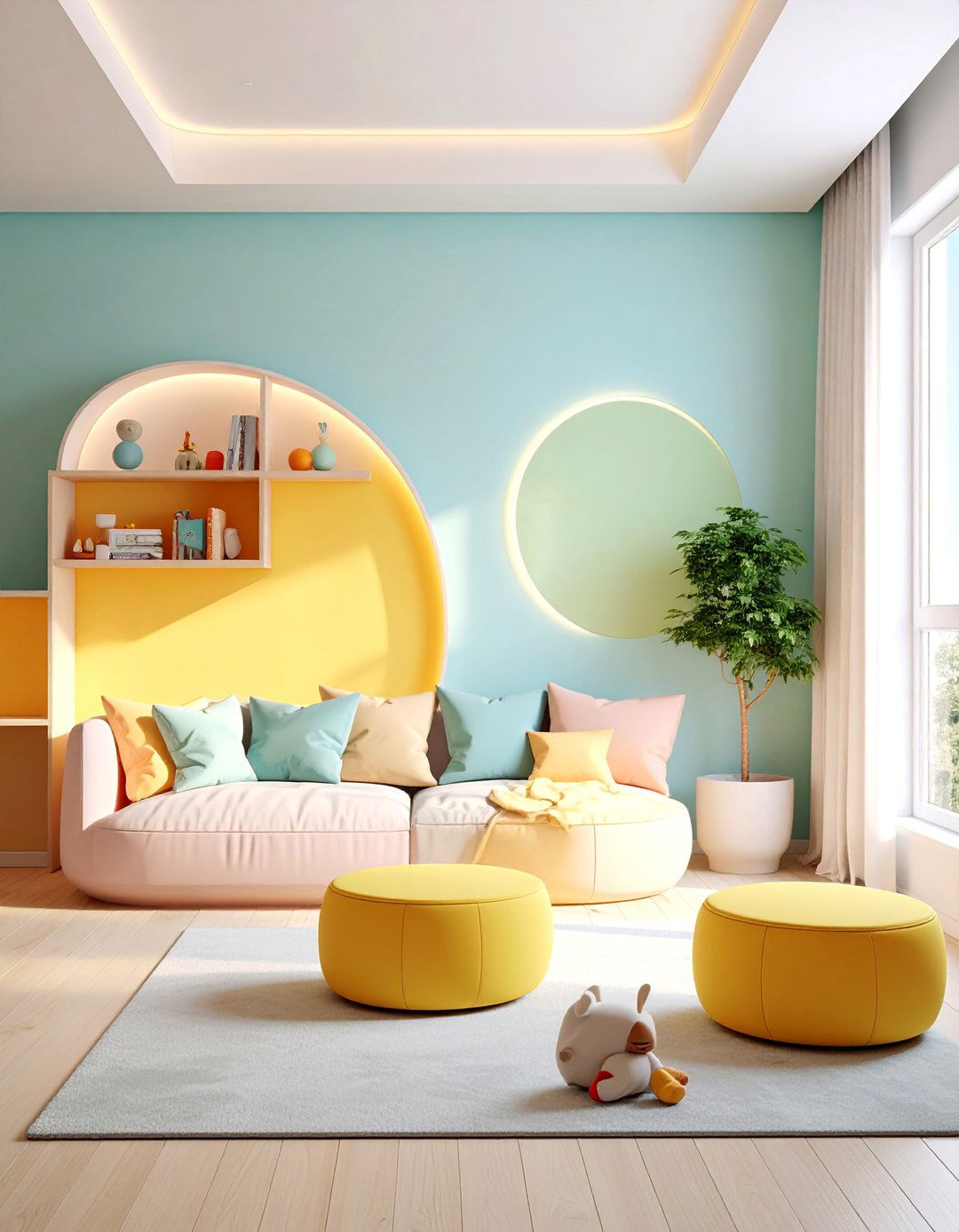
Create a peaceful space for emotional regulation, quiet play, and sensory breaks that supports children's mental health and wellbeing. Soft lighting, comfortable seating, and calming colors establish a soothing atmosphere away from stimulating activities. Breathing exercises posters, emotion recognition charts, and comfort items like stress balls or fidget toys support self-regulation skills. This area becomes especially valuable during overwhelming moments, providing a safe space for processing emotions and practicing coping strategies. Every child needs quiet time to recharge and reflect, making this zone essential for balanced development.
12. Storage Organization System
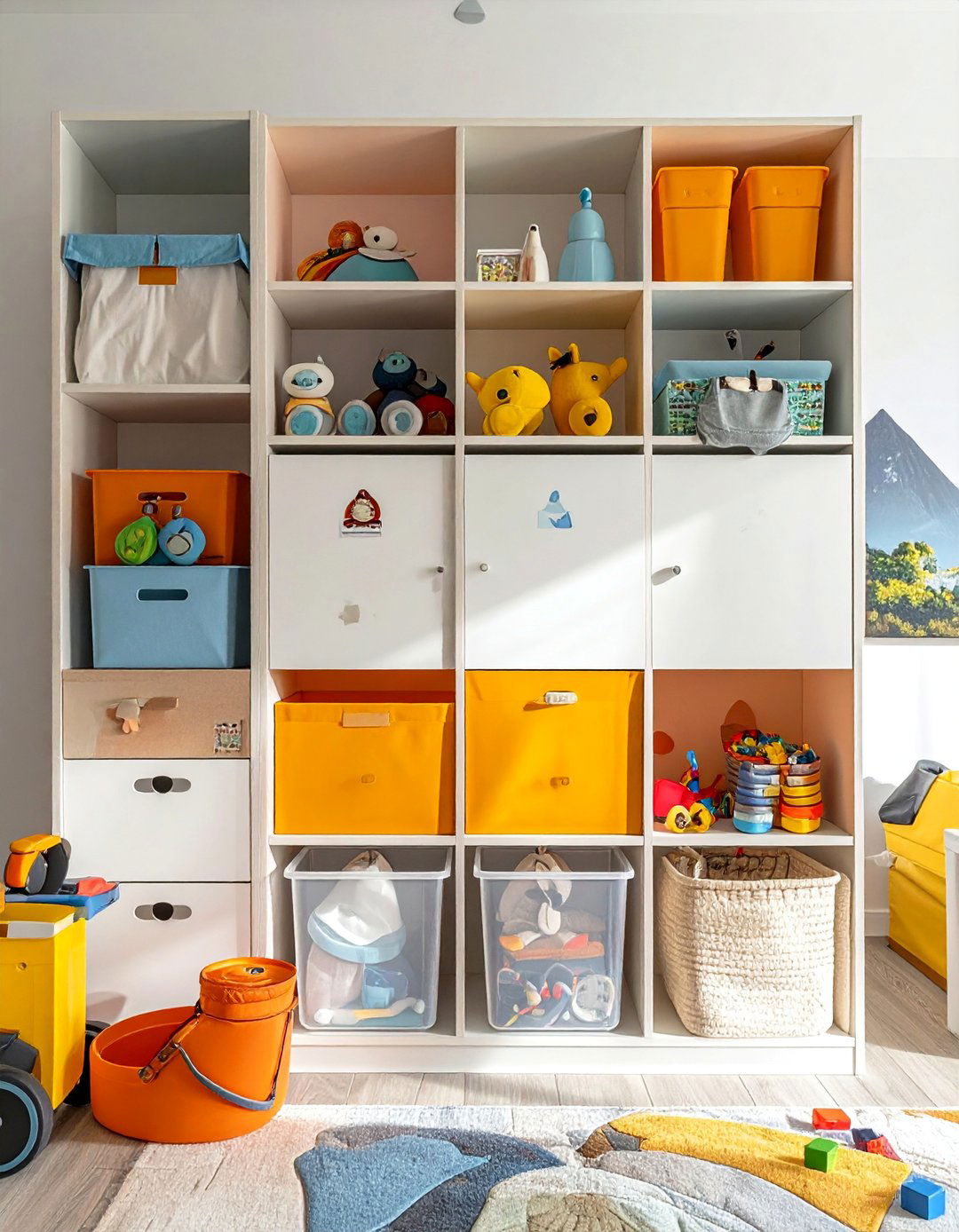
Smart storage solutions maintain order while teaching children responsibility and organizational skills through accessible, labeled systems. Clear bins with picture labels help non-readers identify contents and return items to proper locations. Does everything in your playroom have a designated home? Cube organizers with fabric bins create flexible storage that adapts to changing toy collections. Rolling carts move supplies where needed, while wall-mounted organizers maximize vertical space. A well-organized playroom reduces cleanup stress for parents while empowering children to maintain their own space and develop lifelong organizational habits.
13. Technology Learning Center
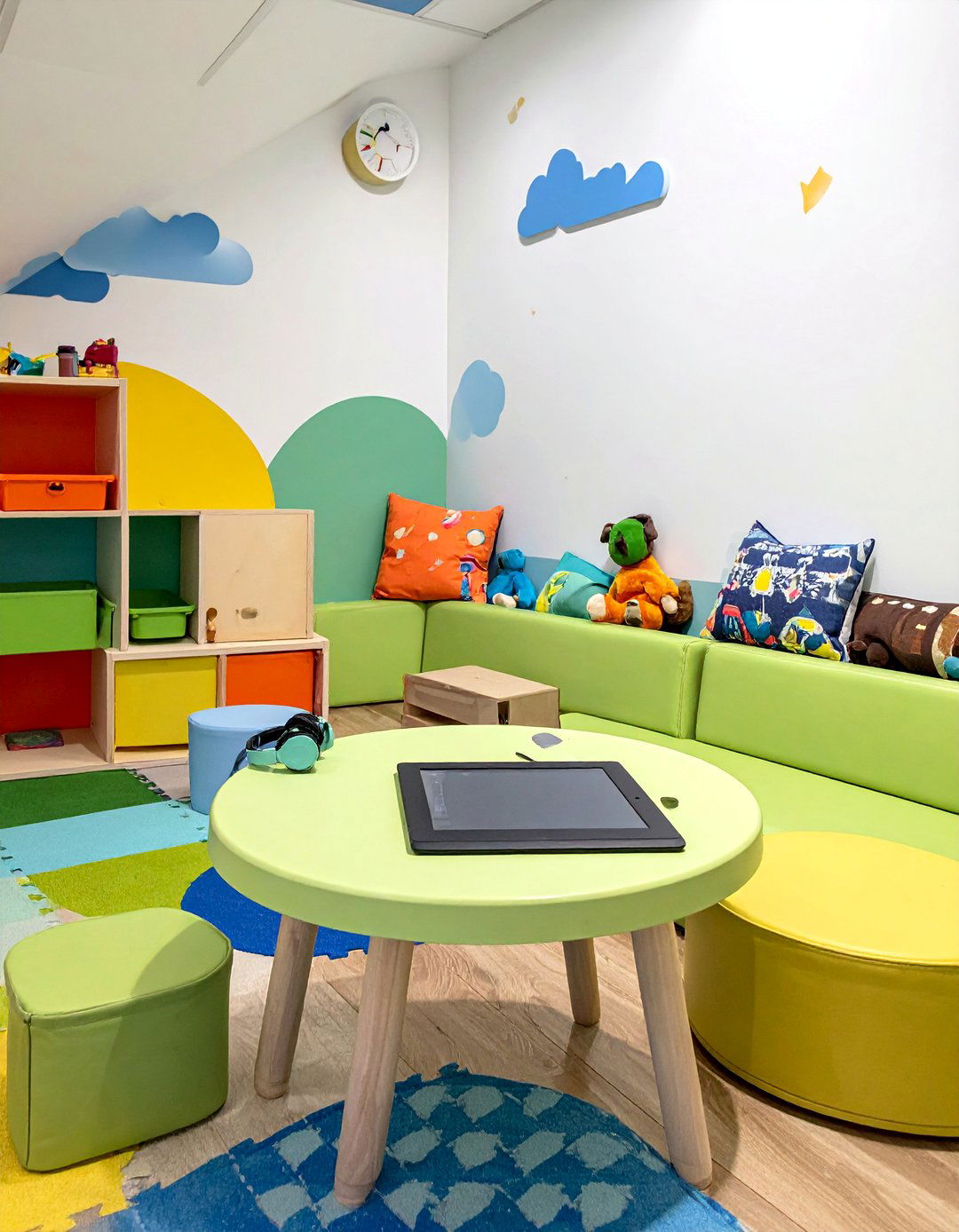
A dedicated technology area provides educational screen time opportunities while maintaining healthy digital boundaries in the playroom environment. A small table holds tablets or computers at appropriate height, with comfortable seating that promotes good posture during use. Educational apps, coding games, and digital art programs combine learning with technology skills children need for future success. Timer systems help manage screen time limits, while nearby storage holds headphones and accessories. This controlled approach to technology integration prepares children for digital literacy while maintaining balance with hands-on play and real-world learning experiences.
14. Water Play Station
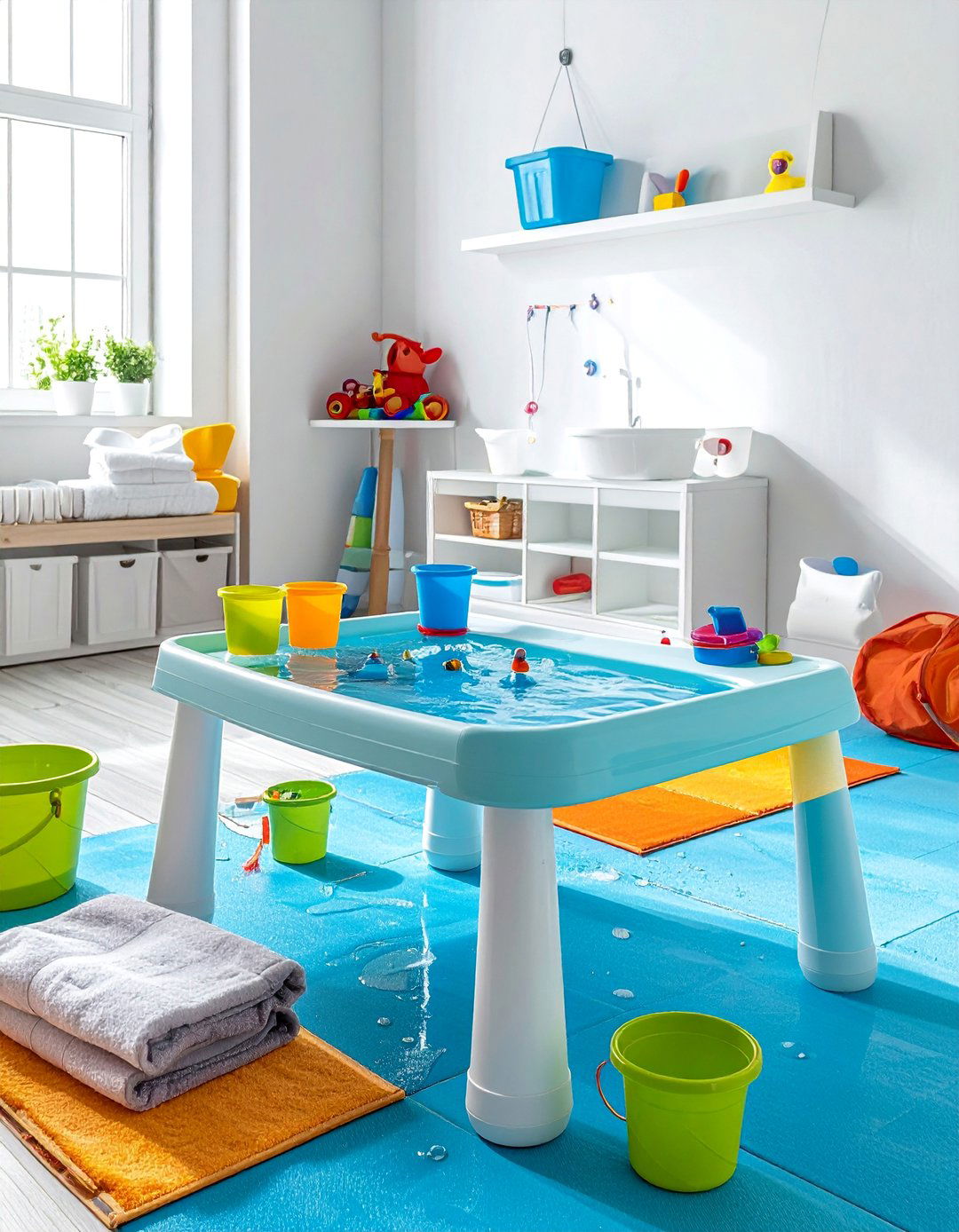
Indoor water play provides sensory experiences and learning opportunities through controlled, mess-contained activities perfect for year-round enjoyment. A water table or large basin with accessories like cups, funnels, and floating toys creates engaging play scenarios. Waterproof flooring and towels nearby manage spills while children explore concepts like volume, flow, and cause-and-effect relationships. This area particularly appeals to children who love sensory experiences while providing cooling relief during hot weather. Water play supports hand-eye coordination, mathematical concepts, and scientific thinking through playful experimentation with liquids and containers.
15. Garden Growing Corner
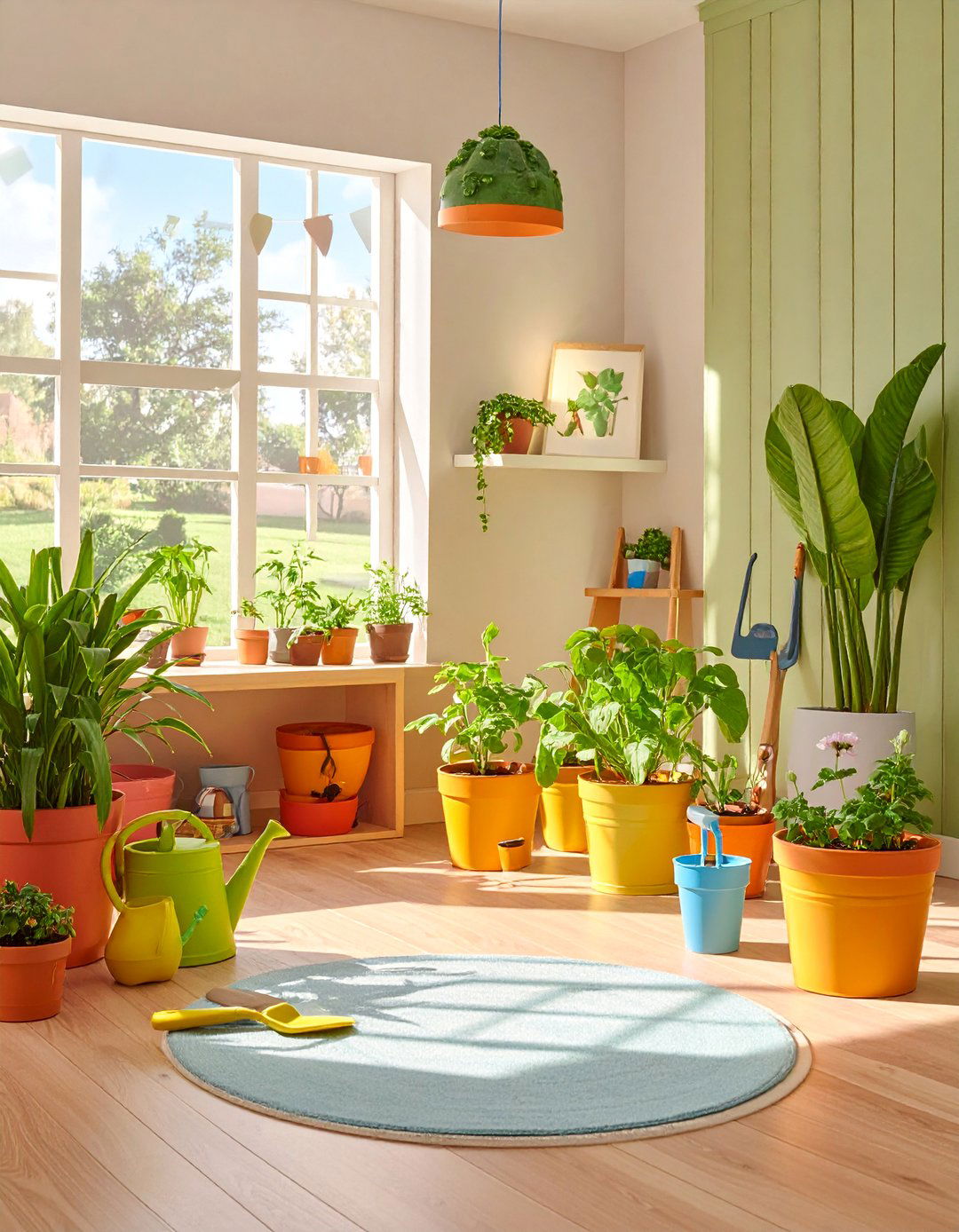
An indoor garden area teaches responsibility, life cycles, and healthy eating through hands-on plant cultivation and care activities. Child-sized pots, watering cans, and gardening tools make plant care accessible and engaging for small hands. Herbs, flowers, or vegetables provide different learning opportunities about growth, seasons, and nutrition. Have you considered how gardening naturally teaches patience and observation skills? A small shelf or stand displays plants at appropriate height while protecting surfaces. This living classroom connects children to food sources, environmental stewardship, and the satisfaction of nurturing life from seed to harvest.
16. Puzzle Problem Solving Area
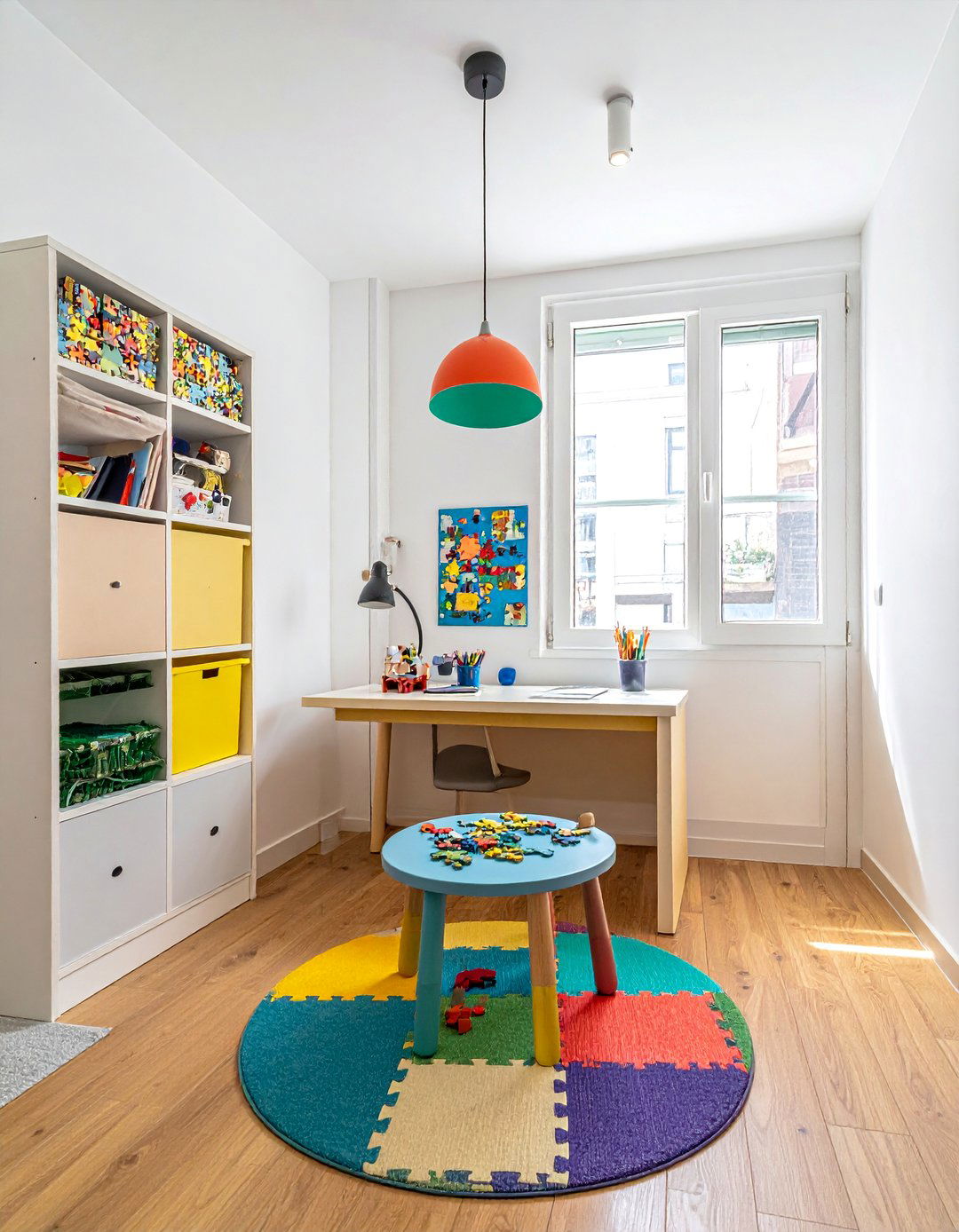
A dedicated puzzle station develops critical thinking, patience, and spatial reasoning through increasingly challenging activities that grow with your child. Various puzzle types from simple wooden shapes to complex jigsaw puzzles provide appropriate challenges for different developmental stages. A small table with good lighting creates an ideal workspace, while organized storage keeps puzzles intact and accessible. This quiet activity supports concentration skills, hand-eye coordination, and problem-solving strategies while providing screen-free entertainment. Completed puzzles create sense of accomplishment while teaching perseverance through challenging tasks that require focus and determination.
17. Transportation Play Zone
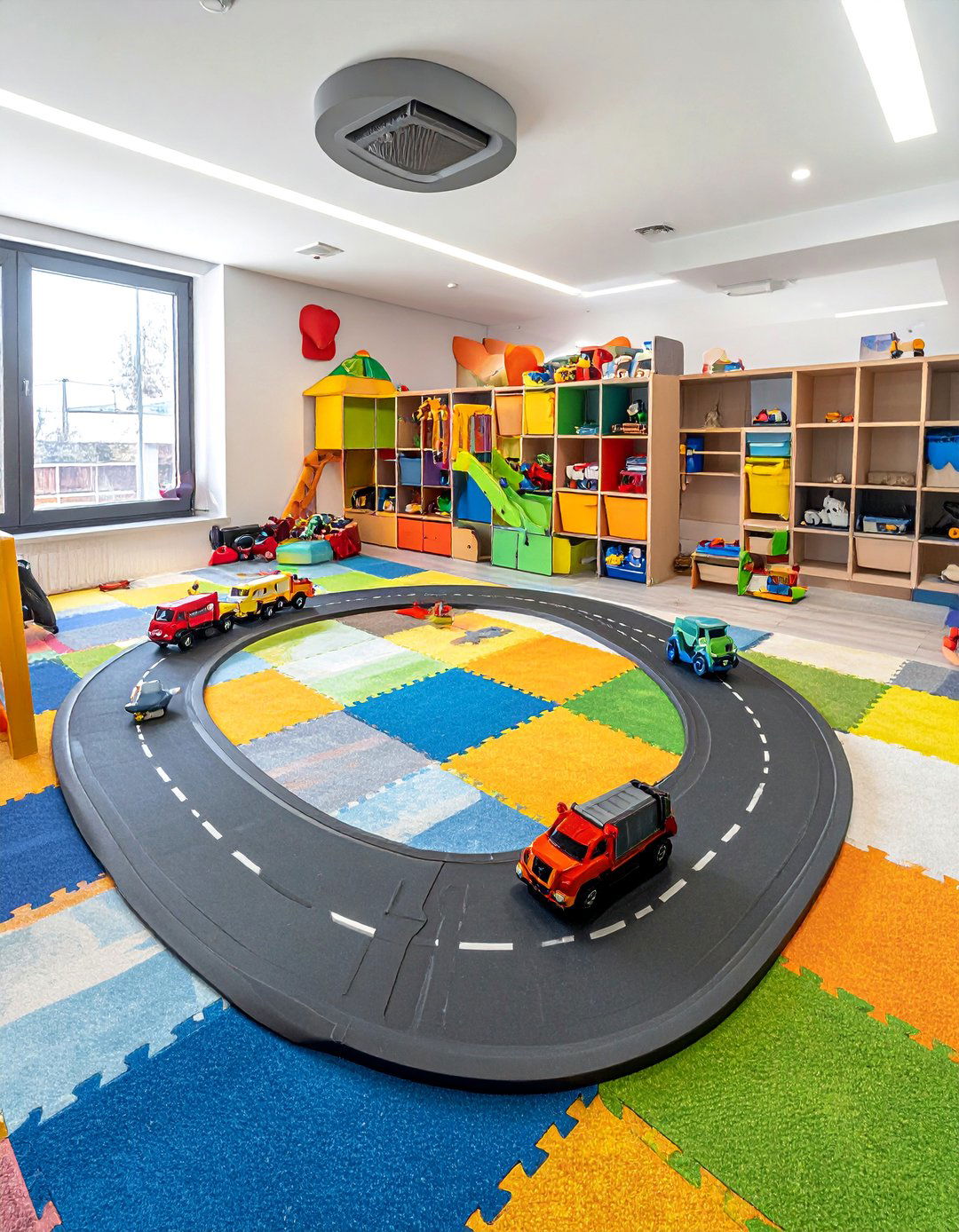
A vehicle-themed area satisfies children's fascination with cars, trains, planes, and other modes of transportation through imaginative play scenarios. Road mats, train tracks, and airport playsets create realistic environments for vehicle play and storytelling. Storage solutions organize different transportation toys while keeping play areas defined and manageable. This zone naturally incorporates learning about community helpers, geography, and how things move while encouraging narrative play and social interaction. Children develop fine motor skills through vehicle manipulation while exploring concepts of speed, direction, and destination through engaging transportation adventures.
18. Cooking Kitchen Corner
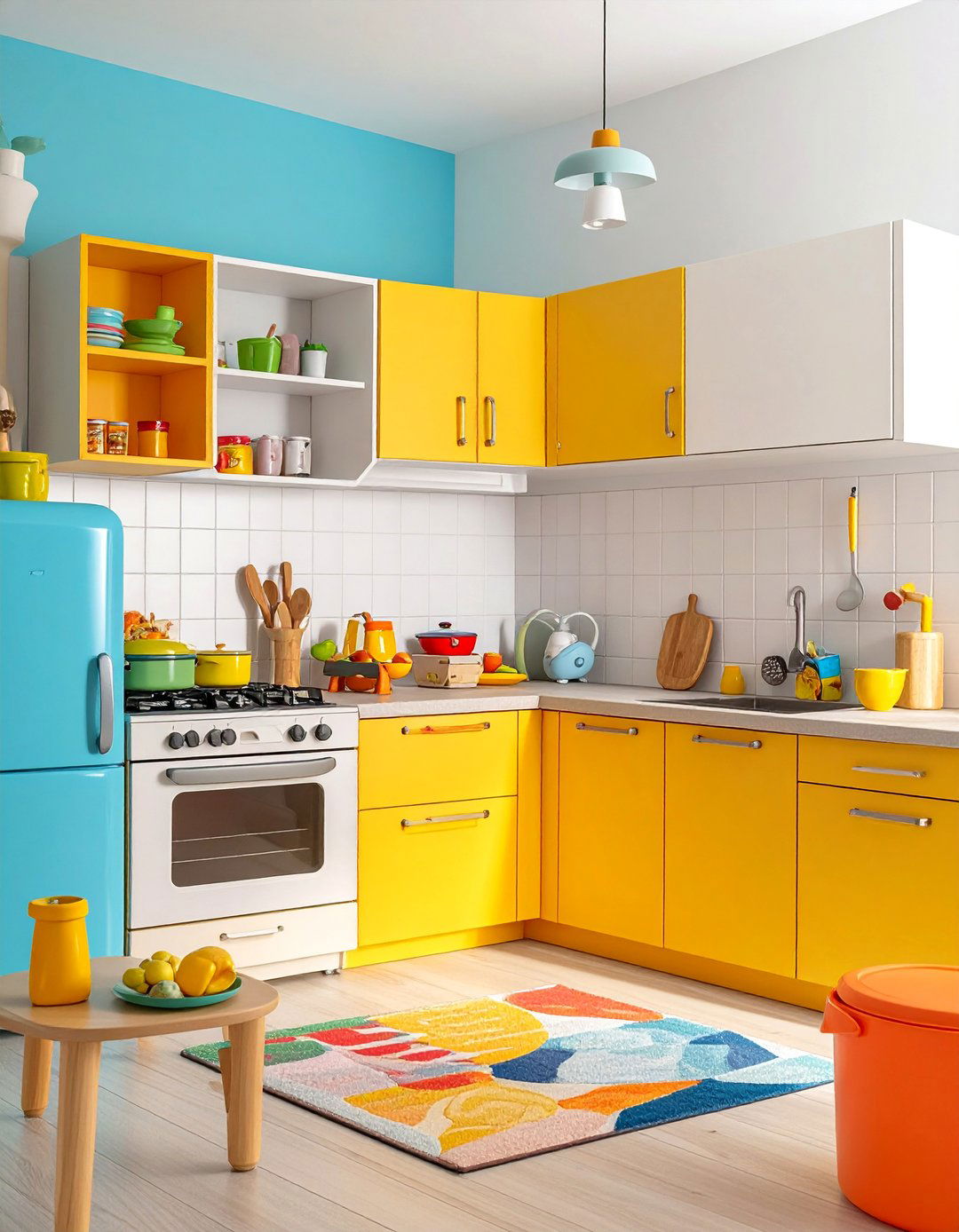
A play kitchen area introduces culinary concepts, math skills, and cultural awareness through pretend cooking and food preparation activities. Child-sized appliances, utensils, and play food create realistic cooking scenarios that mirror adult activities. Does your little chef enjoy experimenting with different recipes and hosting dinner parties? Storage for kitchen accessories keeps the area organized while making cooking play accessible and engaging. This dramatic play zone teaches sequencing, following directions, and social skills while introducing healthy eating concepts and cultural food traditions through fun, interactive play experiences.
19. Craft Making Workshop
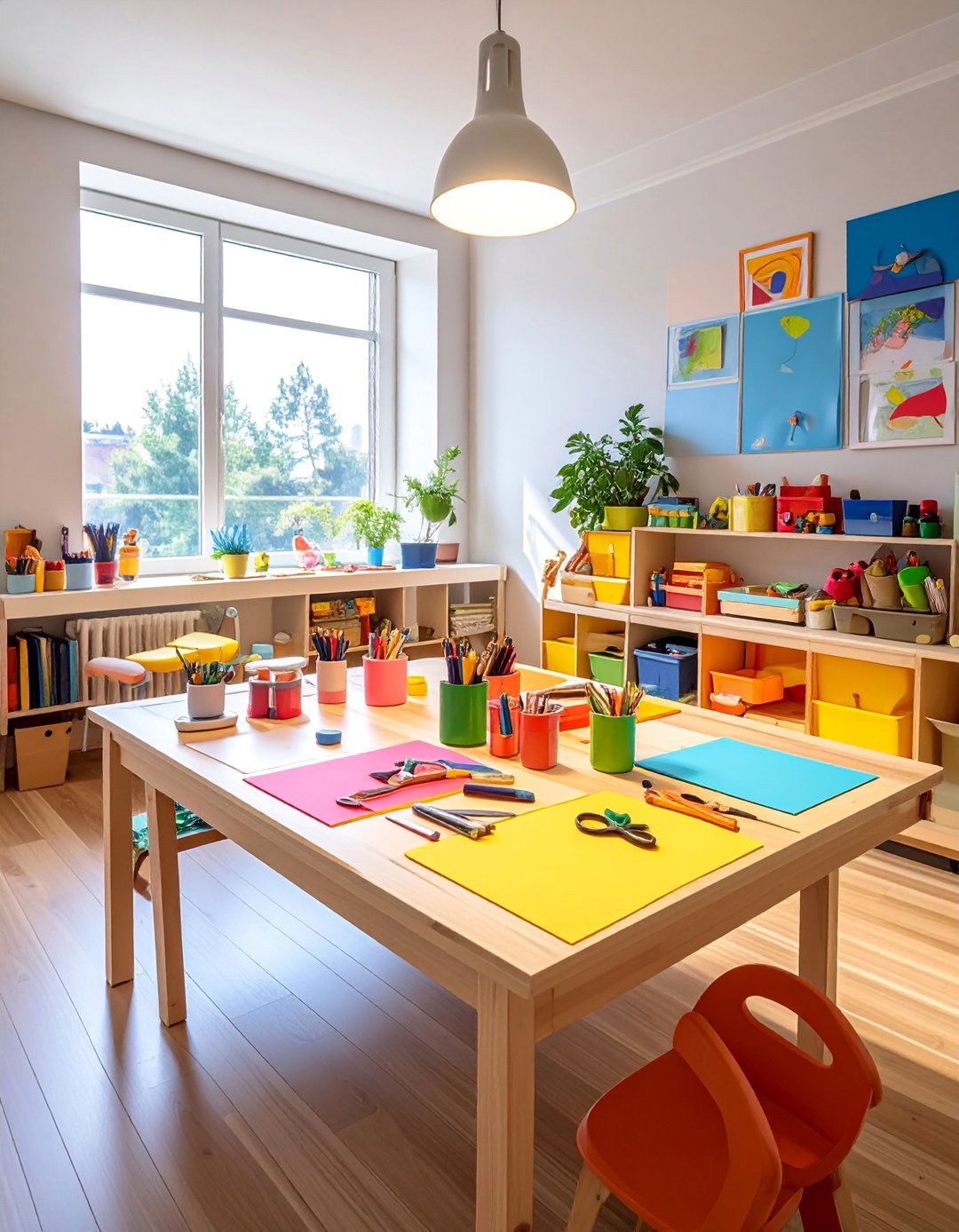
A dedicated crafting area provides organized space and supplies for creative projects that develop fine motor skills and artistic expression. Adjustable tables accommodate different heights while built-in storage holds papers, scissors, glue, and embellishments within easy reach. Good lighting supports detailed work while washable surfaces handle inevitable messes from enthusiastic creating. This zone encourages planning skills, following directions, and creative problem-solving while producing tangible results children can share with pride. Regular craft projects build confidence in artistic abilities while developing patience and attention to detail through engaging creative challenges.
20. Block Building Territory
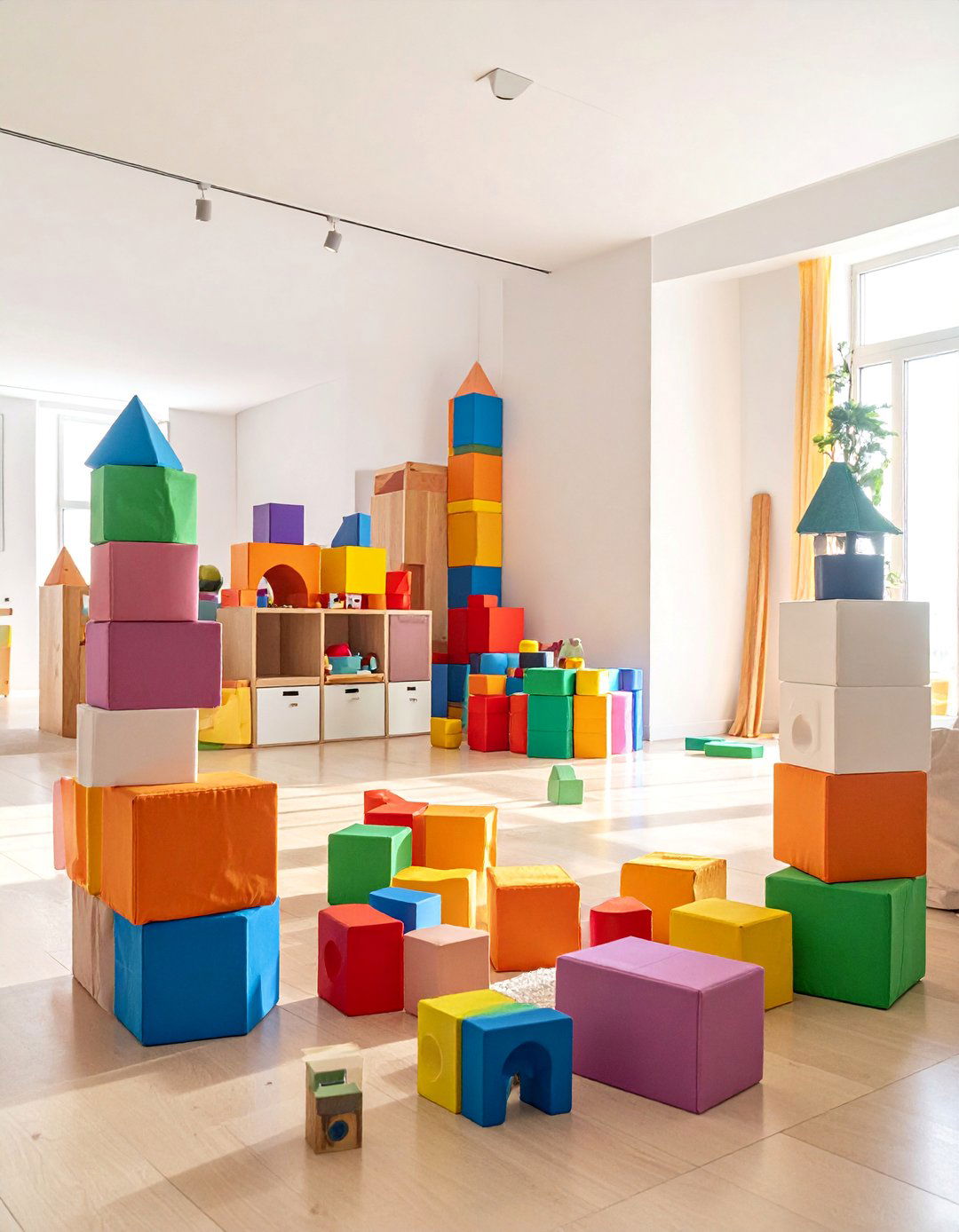
A spacious block area with various building materials supports STEM learning through hands-on construction and engineering exploration activities. Large foam blocks, wooden unit blocks, and specialty building sets provide different construction experiences for various ages and interests. Adequate floor space allows for ambitious projects while defined boundaries contain building activities. This zone develops spatial reasoning, mathematical concepts, and problem-solving skills while encouraging creativity and persistence through building challenges. Children learn about balance, stability, and design principles while creating structures that reflect their imagination and growing understanding of physical world principles.
21. Dance Movement Studio
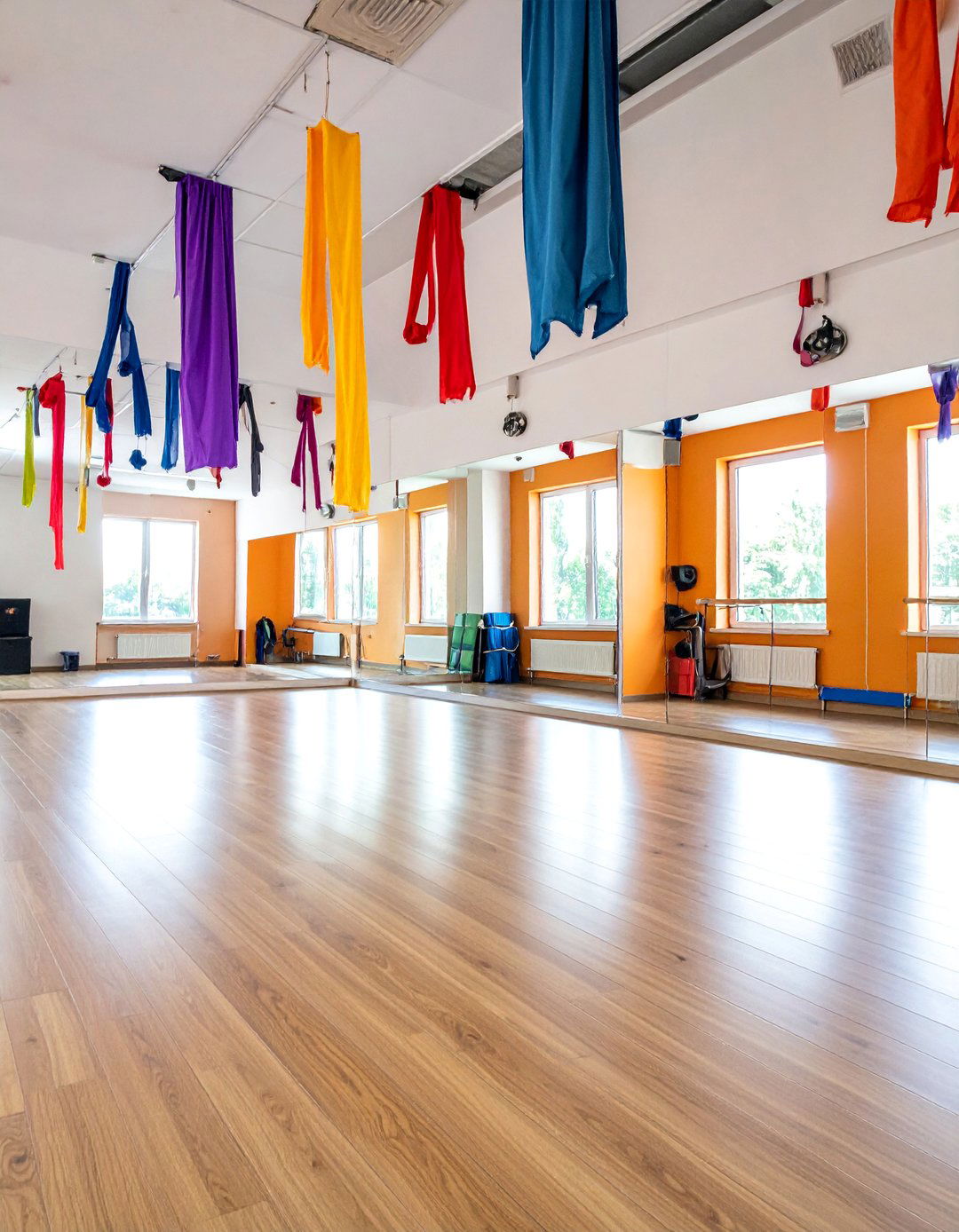
A movement area with open floor space encourages physical expression, rhythm development, and gross motor skill building through dance and movement activities. Mirrors reflect movement and build body awareness while music systems provide rhythmic accompaniment for creative expression. What kind of music makes your child want to move and groove? Scarves, ribbons, and simple props add visual interest to movement activities while storage keeps accessories organized and accessible. This zone supports physical fitness, coordination, and emotional expression while introducing cultural dance forms and musical appreciation through joyful movement experiences.
22. Fort Building Zone
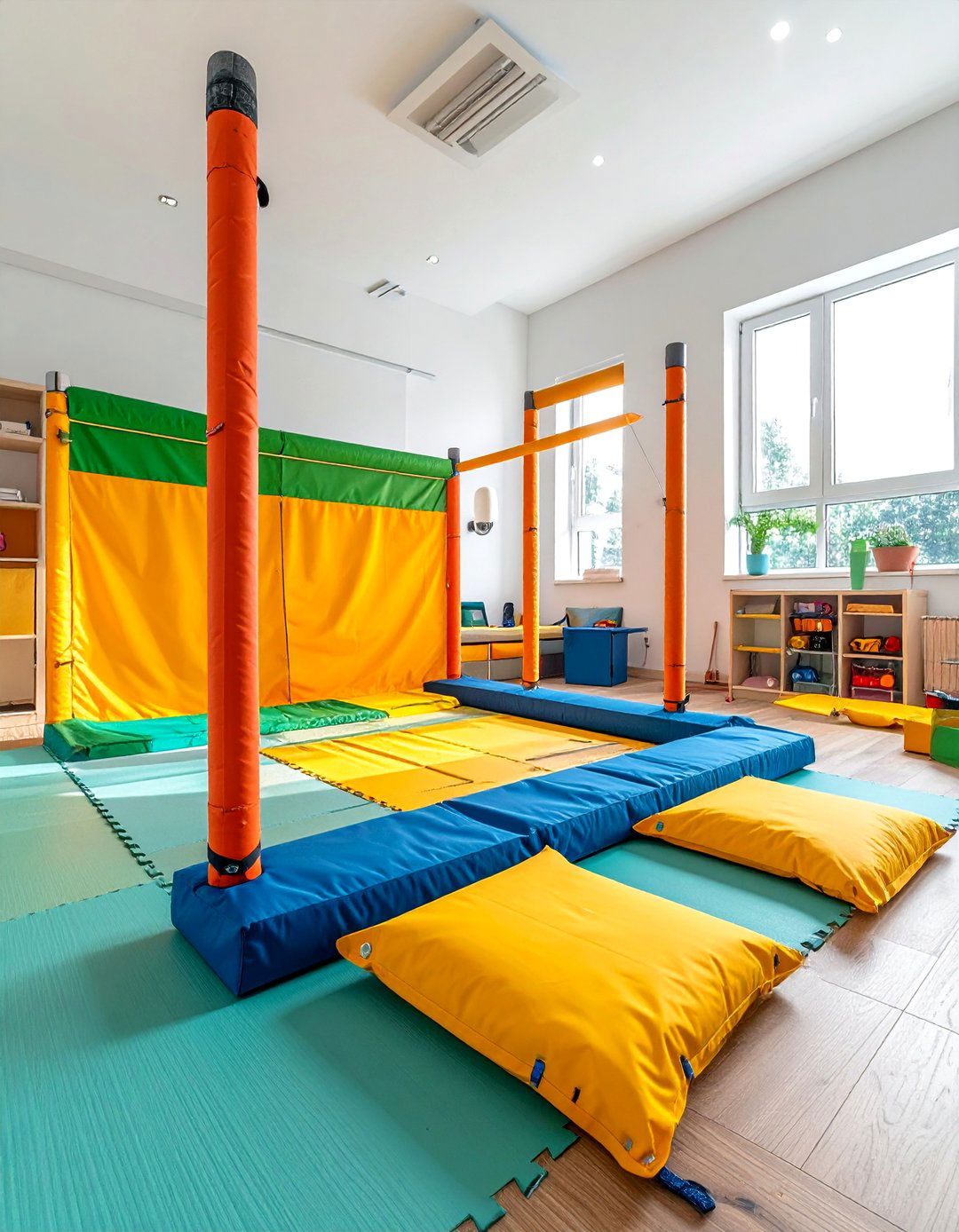
A designated fort area with building materials encourages architectural thinking and provides cozy hideaway spaces for imaginative play and quiet activities. Lightweight poles, connectors, and fabric create safe building opportunities while foam padding provides comfortable flooring for completed forts. This area satisfies children's natural desire for enclosed spaces while developing problem-solving skills through construction challenges. Fort building encourages planning, cooperation during group projects, and spatial reasoning while creating special spaces for reading, quiet play, or social interaction. The temporary nature of forts allows for endless rebuilding and redesigning opportunities.
23. Dollhouse Community Play
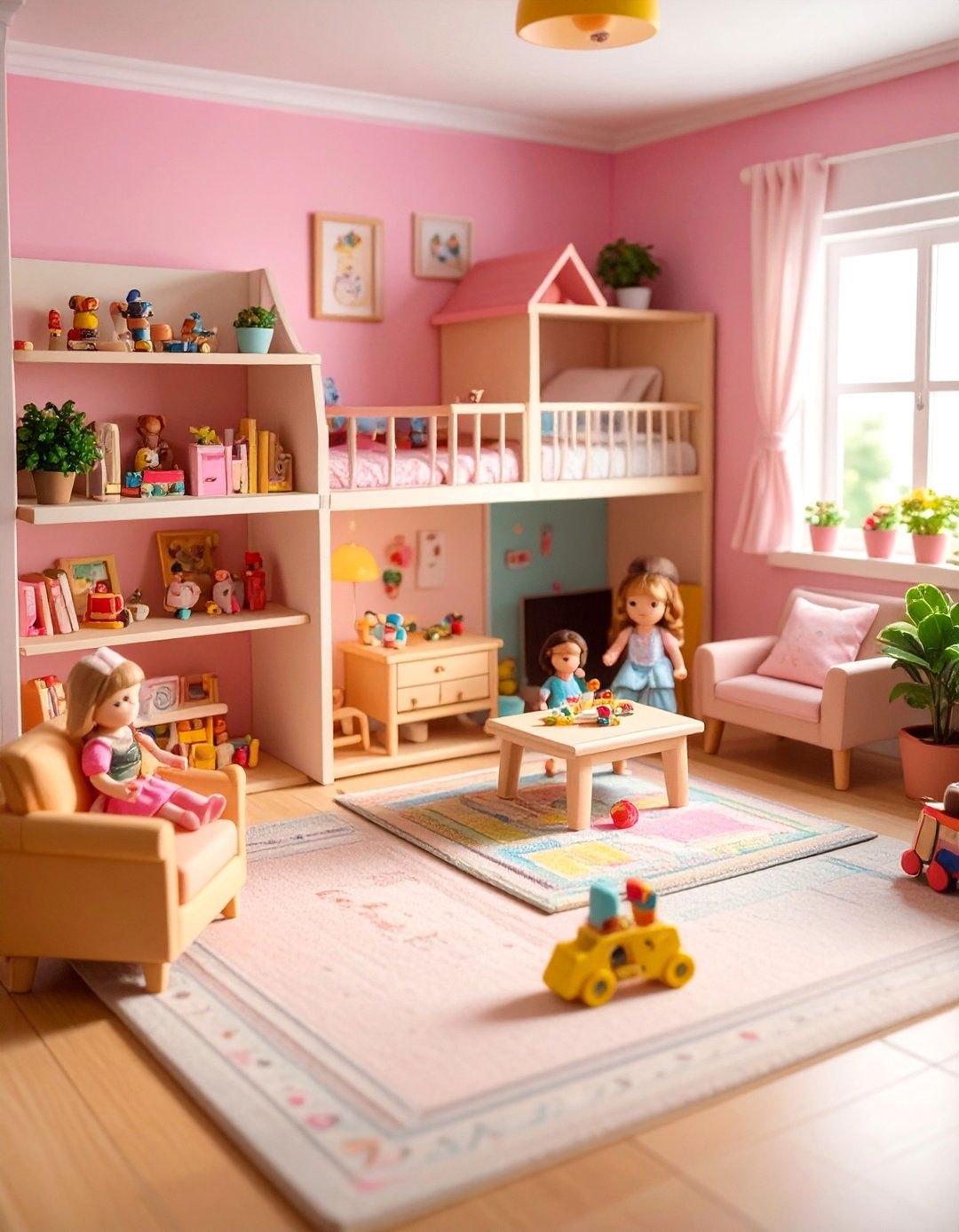
A dollhouse area creates miniature world scenarios that develop storytelling skills, social understanding, and fine motor coordination through detailed play activities. Various dollhouse styles from traditional homes to modern apartments provide different play environments while furniture and accessories create realistic scenarios. How do families in different cultures live and interact with each other? This zone encourages narrative development, character creation, and social skill practice while introducing concepts about family structures, community roles, and daily life routines through engaging miniature world exploration and imaginative storytelling.
24. Train Transportation System
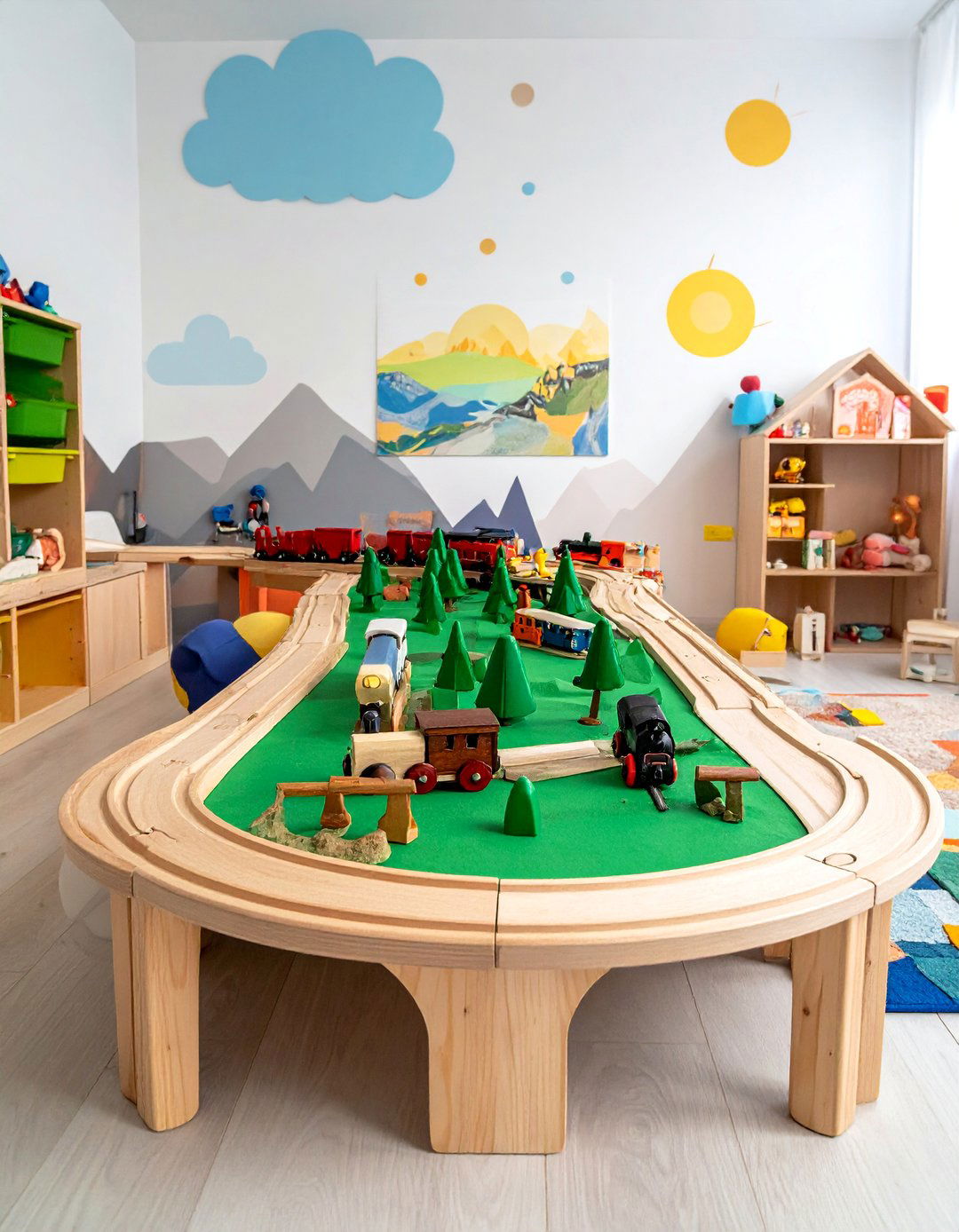
A train table area provides organized space for railway construction and locomotive play that develops planning skills and spatial reasoning abilities. Wooden tracks, trains, and scenery accessories create elaborate transportation networks while built-in storage contains pieces when not in use. This zone appeals to children fascinated by moving vehicles while teaching cause-and-effect relationships through track construction and train operation. Train play encourages problem-solving, following routes, and understanding transportation systems while providing opportunities for independent play and social interaction during collaborative track building and train operation activities.
25. Space Exploration Command
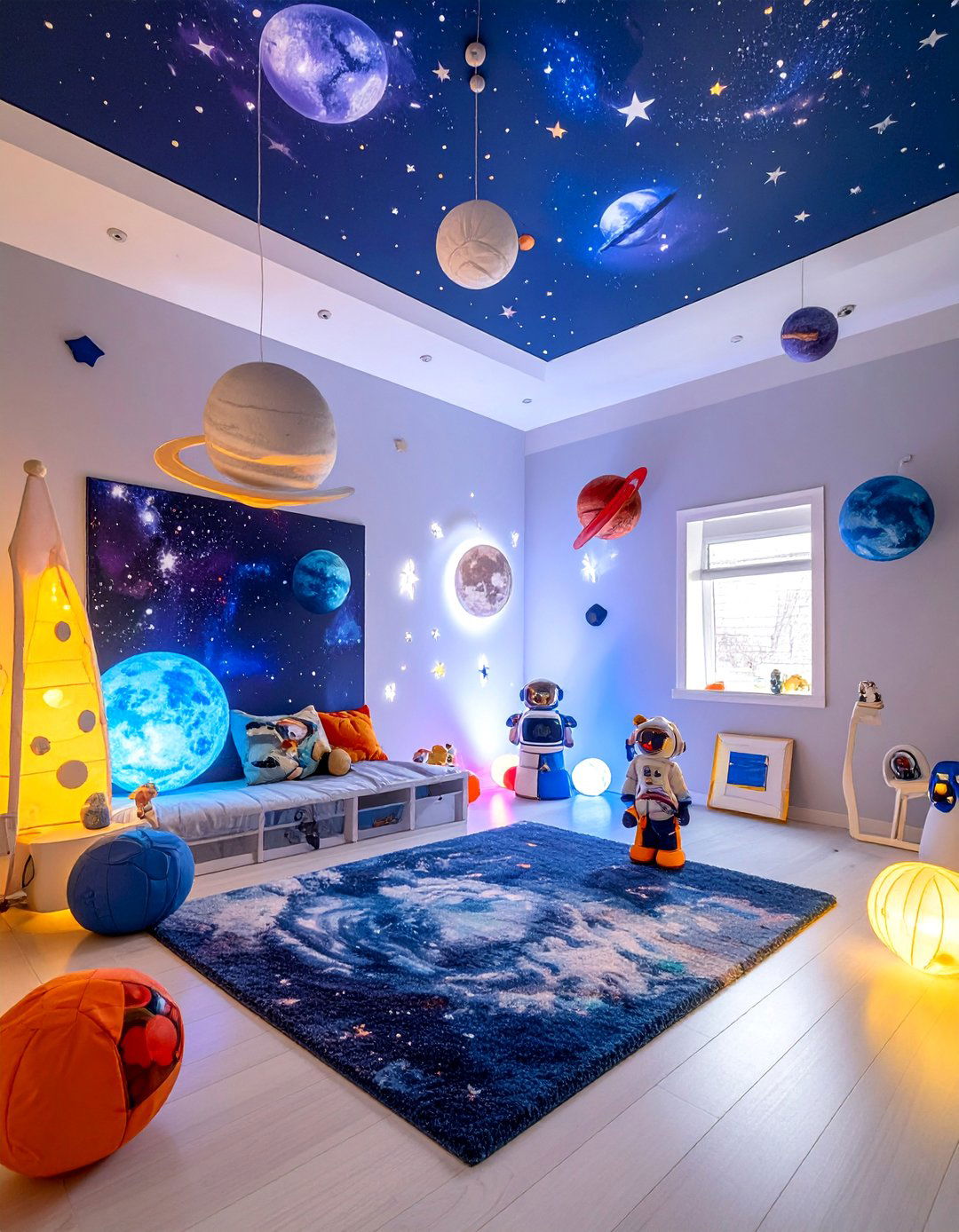
A space-themed area ignites curiosity about astronomy and science through cosmic play scenarios and educational exploration activities. Glow-in-the-dark stars, planet models, and space-themed toys create an otherworldly environment while books about space introduce scientific concepts. Have you ever wondered what it would be like to explore distant planets and galaxies? This zone encourages STEM learning, imaginative play, and scientific thinking while introducing concepts about our solar system, space exploration, and astronaut careers. Space play naturally incorporates counting, measurement, and observation skills through engaging cosmic adventures and discovery activities.
26. Ocean Underwater World
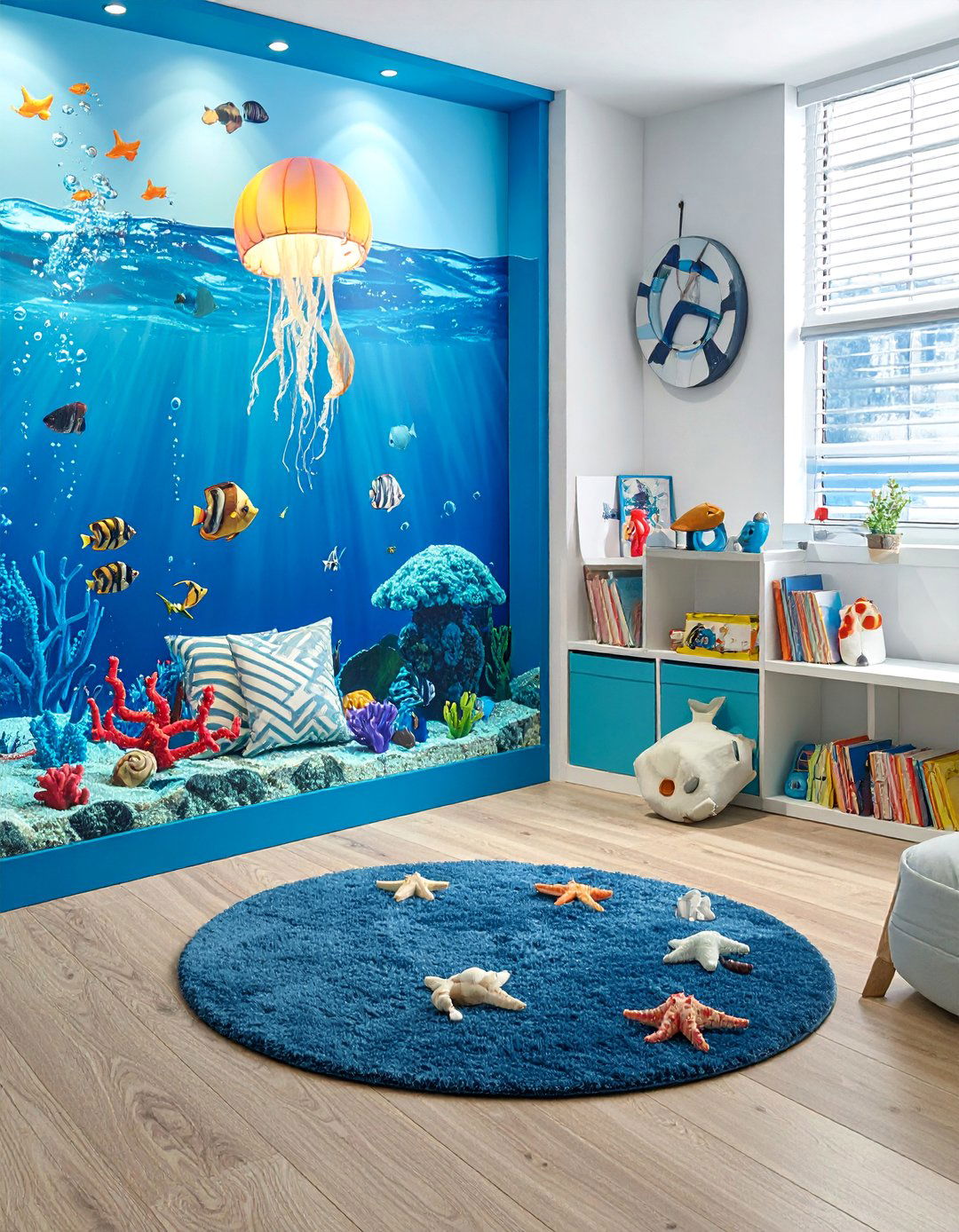
An ocean-themed play area creates aquatic environments that teach marine biology concepts while providing immersive imaginative play experiences. Blue lighting, sea creature toys, and underwater scenery transform the space into an oceanic habitat while books about marine life introduce educational content. This zone encourages environmental awareness, scientific curiosity, and conservation concepts while providing engaging play scenarios. Ocean play naturally incorporates learning about habitats, sea creatures, and water cycles while encouraging imaginative adventures through underwater exploration and marine life discovery activities that spark interest in ocean conservation.
27. Farm Agriculture Learning
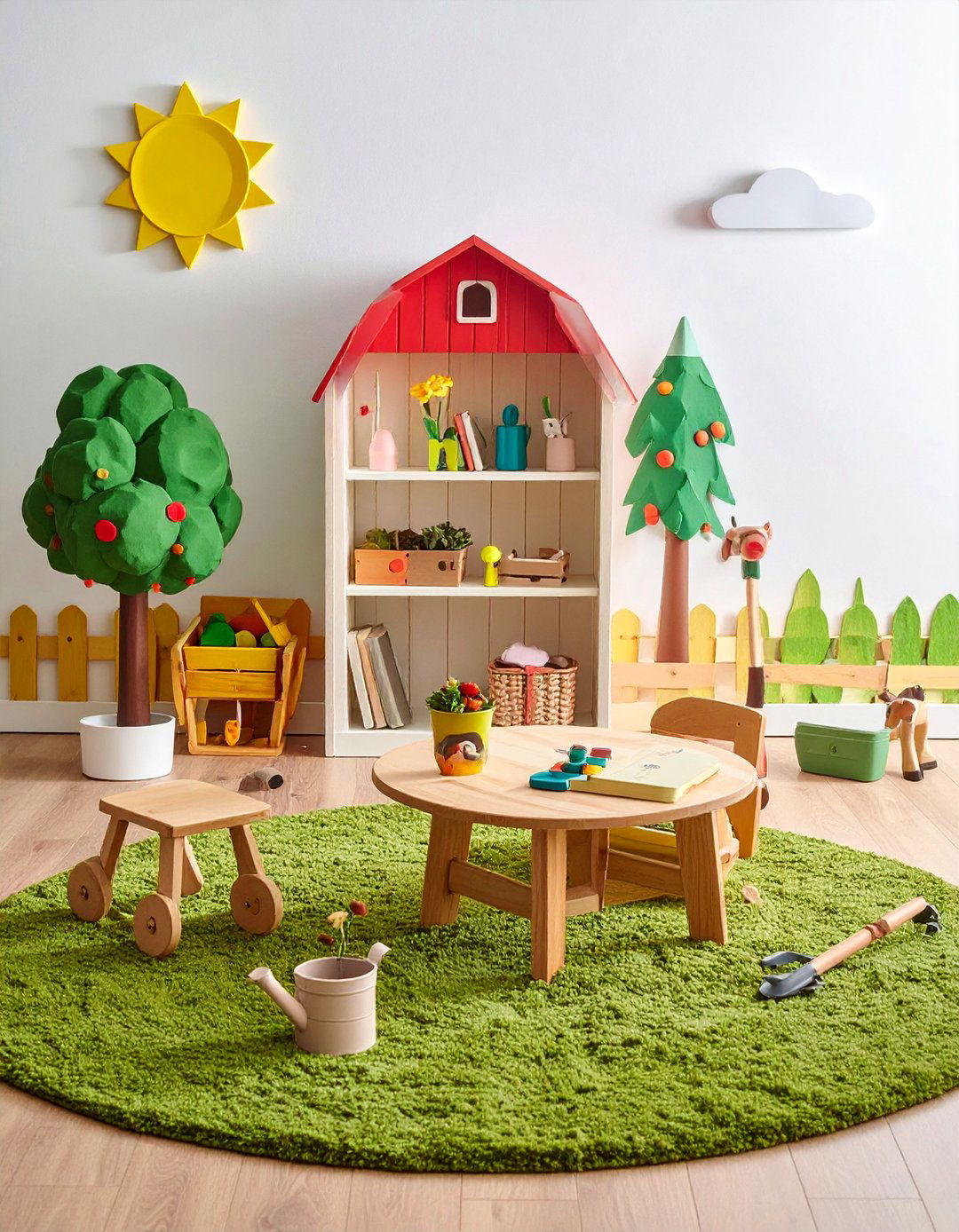
A farm-themed area introduces agricultural concepts, animal care, and food production through hands-on play and educational exploration activities. Farm animal figures, barn playsets, and gardening accessories create realistic farming scenarios while books about agriculture introduce educational content. What role do farmers play in bringing food from farm to table? This zone teaches responsibility, life cycles, and healthy eating while encouraging imaginative play and social interaction. Farm play naturally incorporates counting, sequencing, and scientific thinking while introducing concepts about animal care, crop growing, and rural life through engaging agricultural adventures and discovery activities.
28. Castle Medieval Adventure
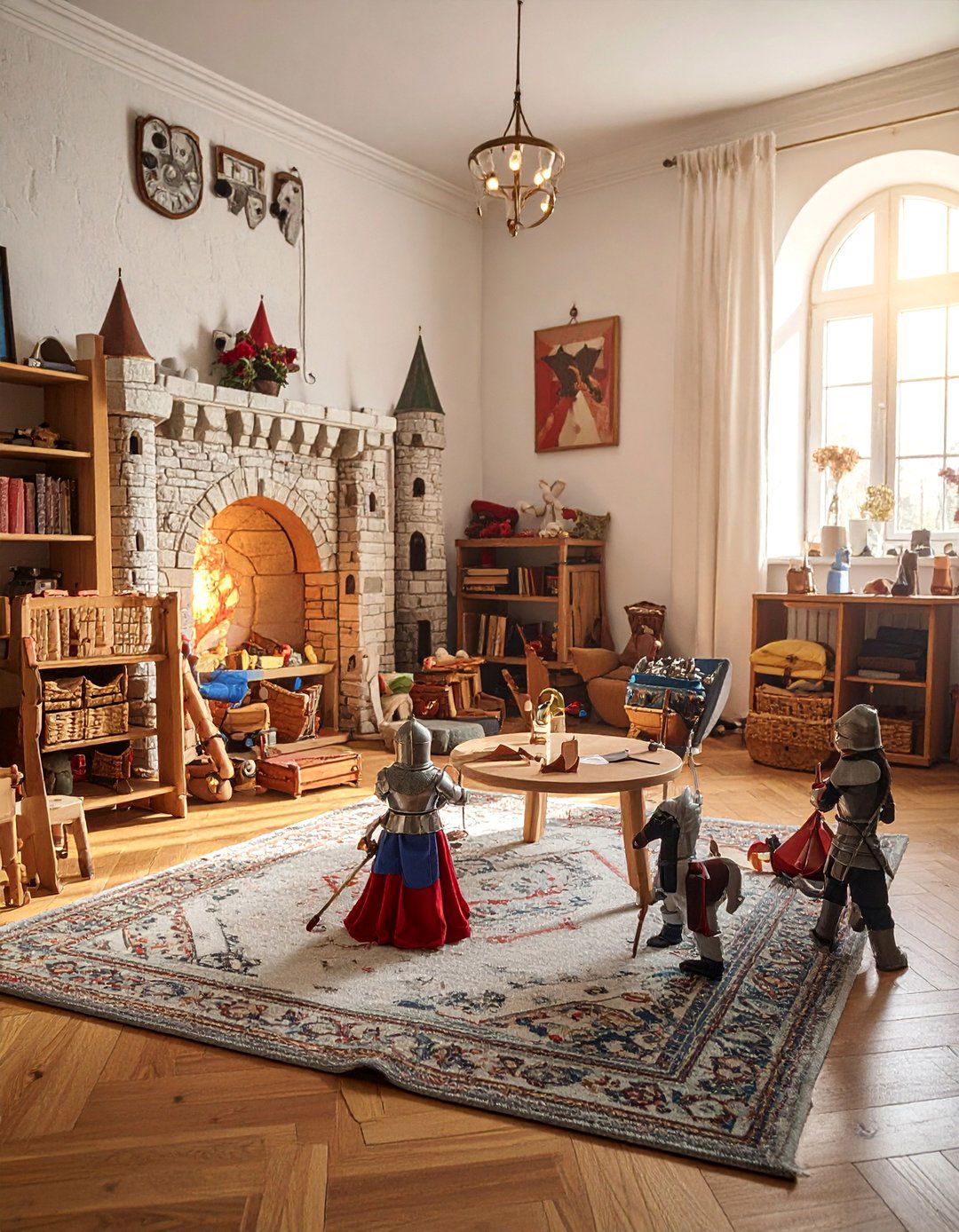
A castle-themed play area transports children to medieval times through historical imagination and dramatic play scenarios that encourage storytelling and cultural learning. Castle playsets, knight figures, and medieval accessories create authentic historical environments while books about castles and knights introduce educational content. This zone encourages historical thinking, imaginative play, and social skill development while introducing concepts about different time periods, cultures, and historical events. Medieval play naturally incorporates lessons about community roles, historical timelines, and cultural traditions while providing opportunities for heroic adventures and creative storytelling activities.
29. Doctor Medical Center
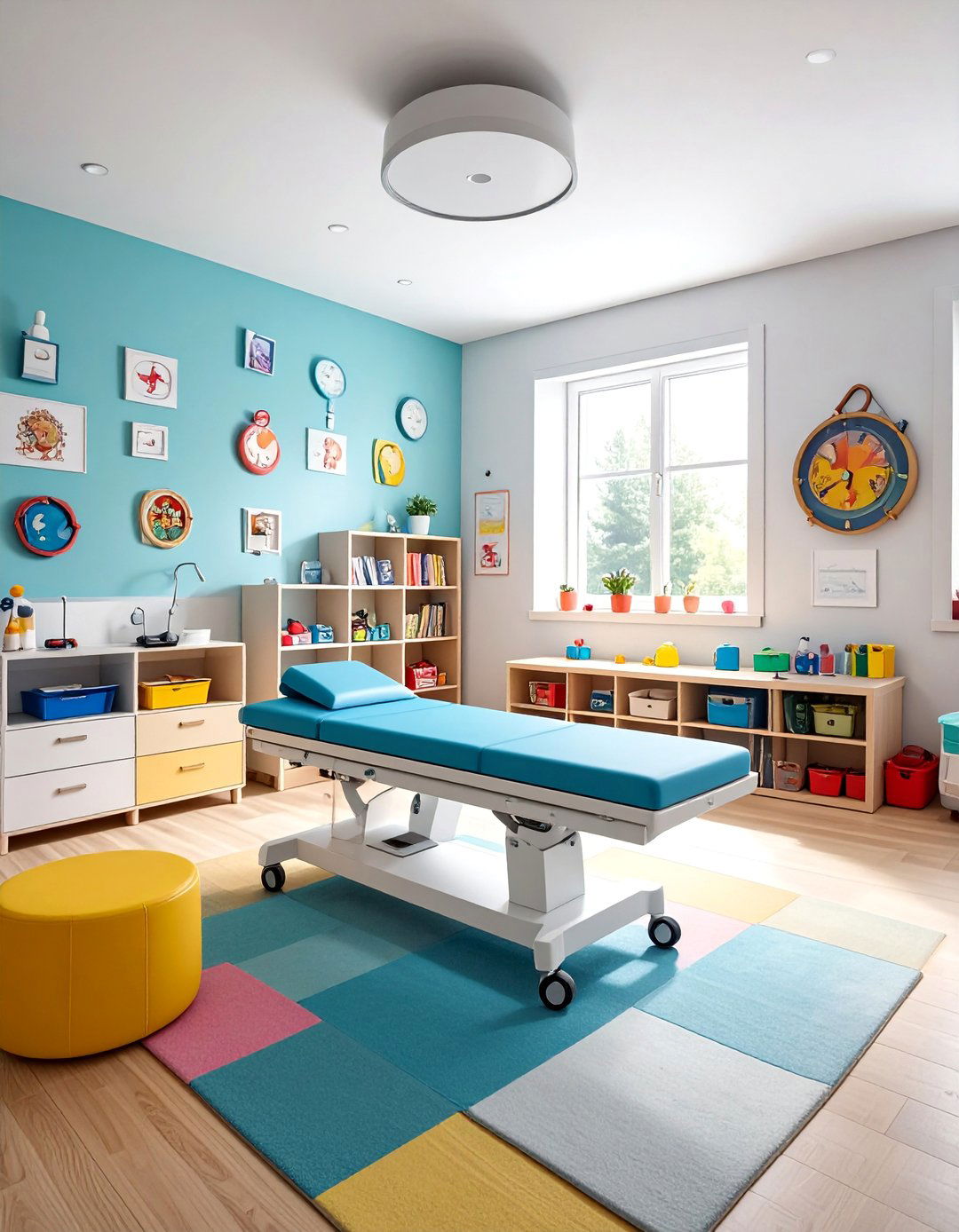
A medical play area reduces healthcare anxiety while teaching body awareness and helping concepts through realistic medical play scenarios. Doctor kits, examination tables, and medical accessories create authentic healthcare environments while books about doctors and health introduce educational content. Does playing doctor help children feel more comfortable with real medical visits? This zone encourages empathy, helping behaviors, and scientific thinking while introducing concepts about health, body systems, and medical careers. Medical play naturally incorporates counting, measurement, and problem-solving skills while providing opportunities for nurturing play and overcoming healthcare-related fears through positive associations.
30. Grocery Store Market
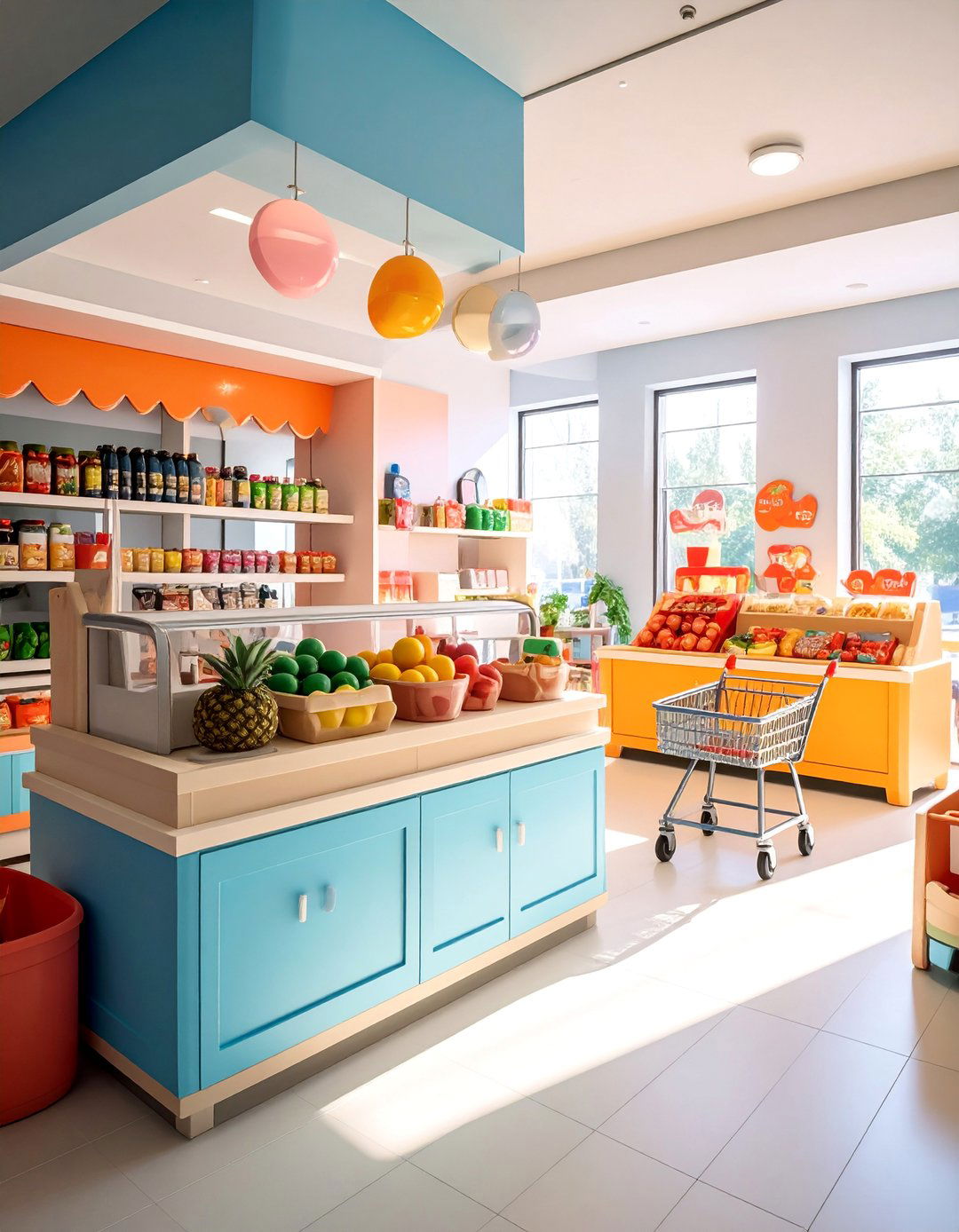
A grocery store play area teaches math concepts, healthy eating, and community roles through realistic shopping and market play scenarios. Play registers, shopping carts, and food accessories create authentic retail environments while books about nutrition and shopping introduce educational content. This zone encourages mathematical thinking, social skills, and practical life concepts while introducing money concepts, healthy food choices, and community helpers. Market play naturally incorporates counting, sorting, and classification skills while providing opportunities for social interaction and role-playing activities that reflect real-world experiences and community understanding.
31. Library Reading Center
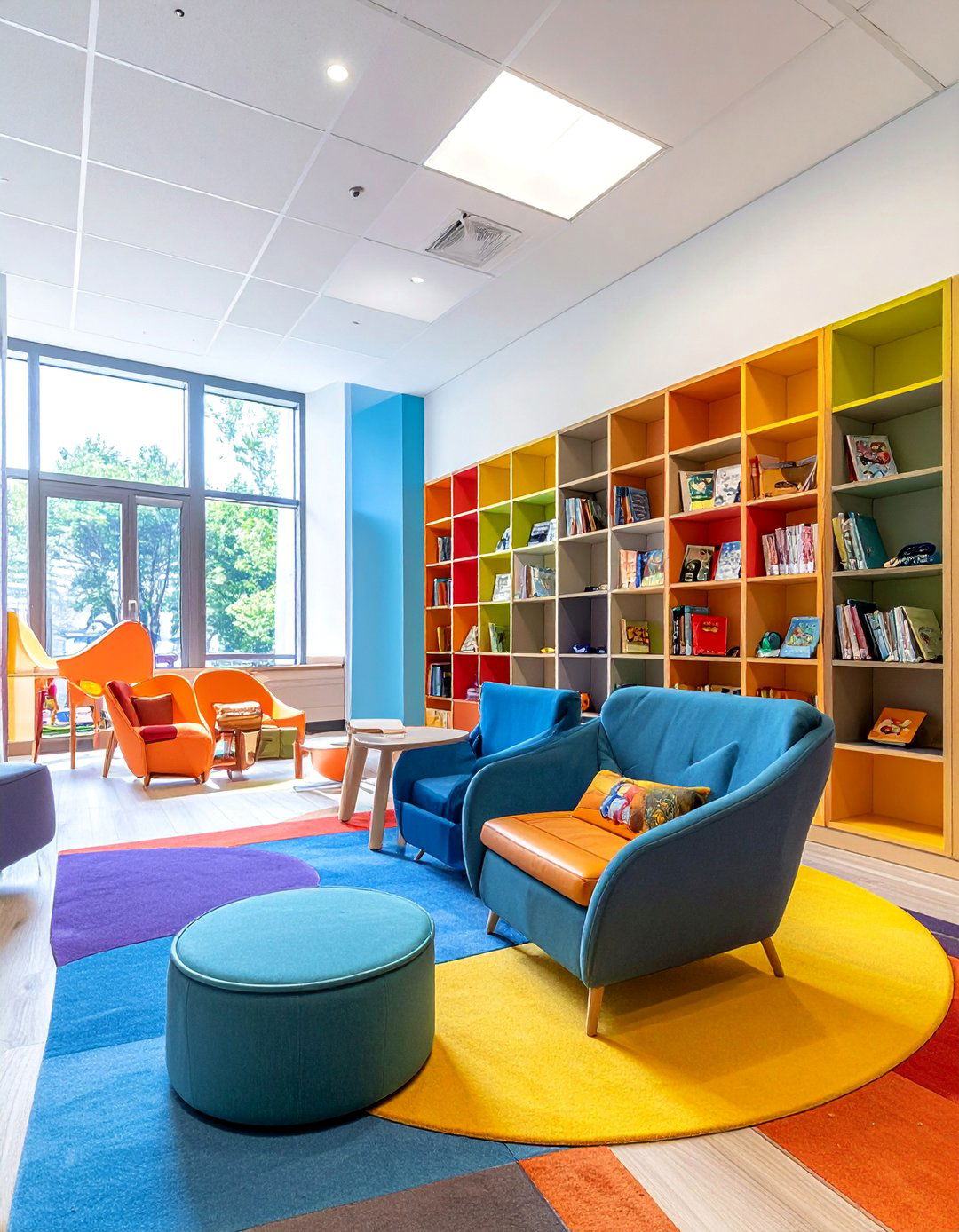
A library-themed area promotes literacy and research skills through organized book collections and quiet study environments that encourage learning exploration. Child-height bookshelves, reading chairs, and library accessories create authentic literary environments while organizational systems teach classification and care of books. This zone encourages reading habits, organizational skills, and respect for books while introducing library concepts and research methods. Library play naturally incorporates alphabet recognition, storytelling, and quiet activity skills while providing opportunities for independent learning and literary exploration that supports educational development and lifelong learning habits.
32. Post Office Communication
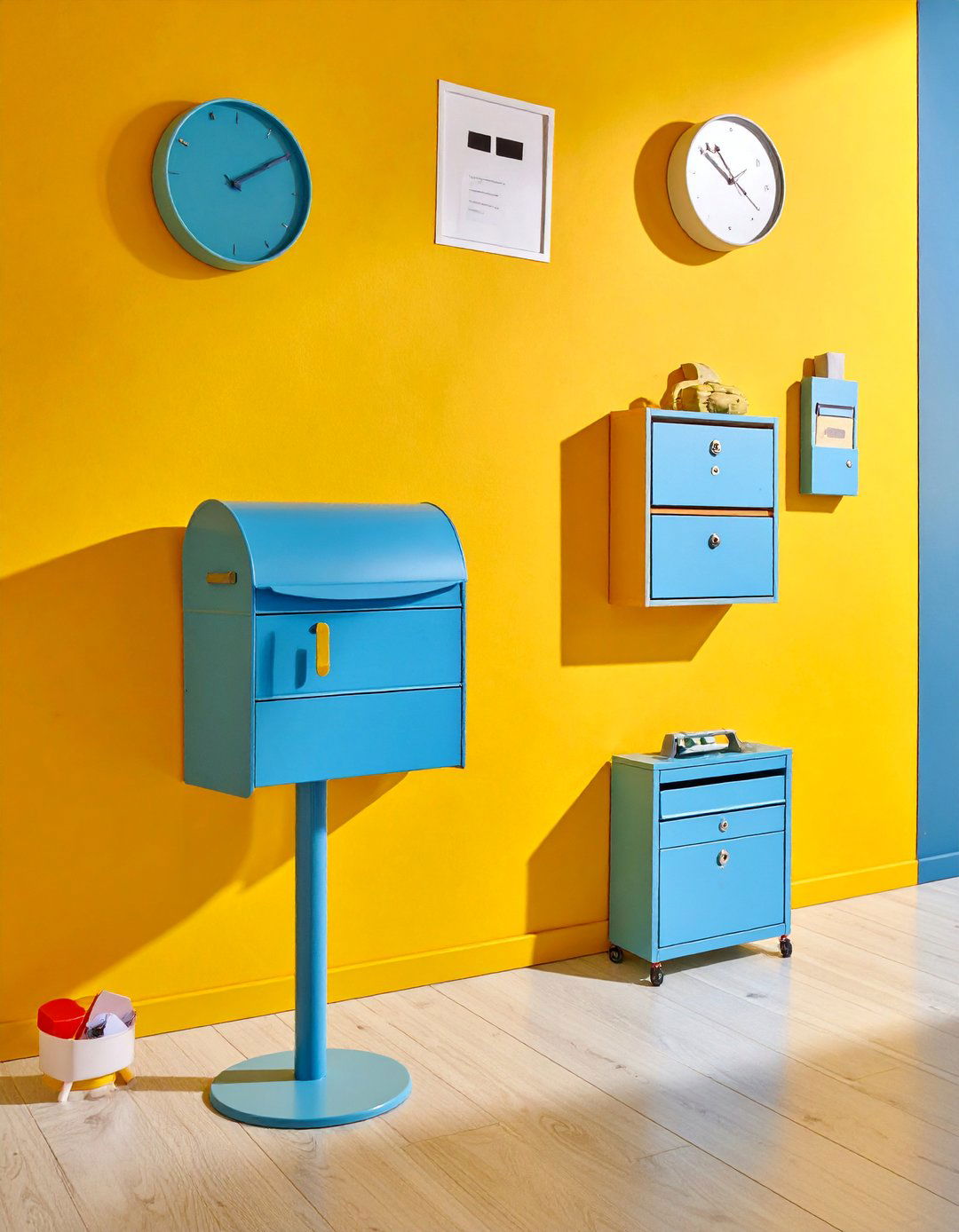
A post office play area teaches communication concepts and community services through mail handling and delivery play scenarios that reflect real-world systems. Mailboxes, letters, and postal accessories create authentic communication environments while books about mail delivery introduce educational content. How do letters travel from one place to another around the world? This zone encourages writing skills, social understanding, and community awareness while introducing concepts about communication, geography, and postal services. Mail play naturally incorporates letter recognition, addressing skills, and social connection while providing opportunities for creative writing and community role understanding through engaging postal adventures.
33. Fire Station Safety Hub
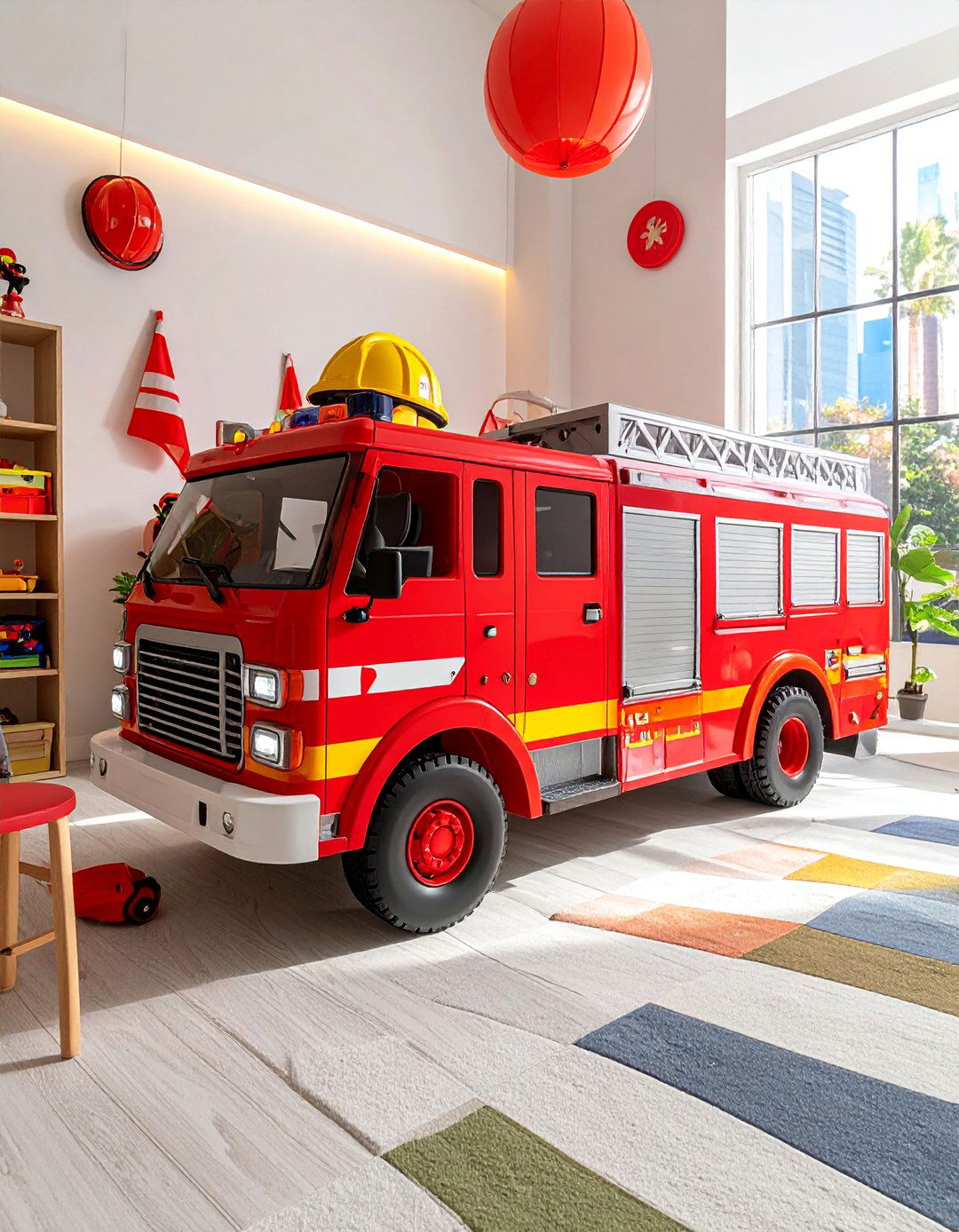
A fire station play area teaches safety concepts and community helper roles through emergency response play scenarios that build awareness and reduce fears. Fire trucks, safety equipment, and emergency accessories create realistic rescue environments while books about fire safety introduce educational content. This zone encourages safety thinking, helping behaviors, and community understanding while introducing concepts about emergency preparedness, safety rules, and community protection. Fire safety play naturally incorporates problem-solving, teamwork, and safety awareness while providing opportunities for heroic play and community service understanding through engaging emergency response adventures.
34. School Classroom Learning
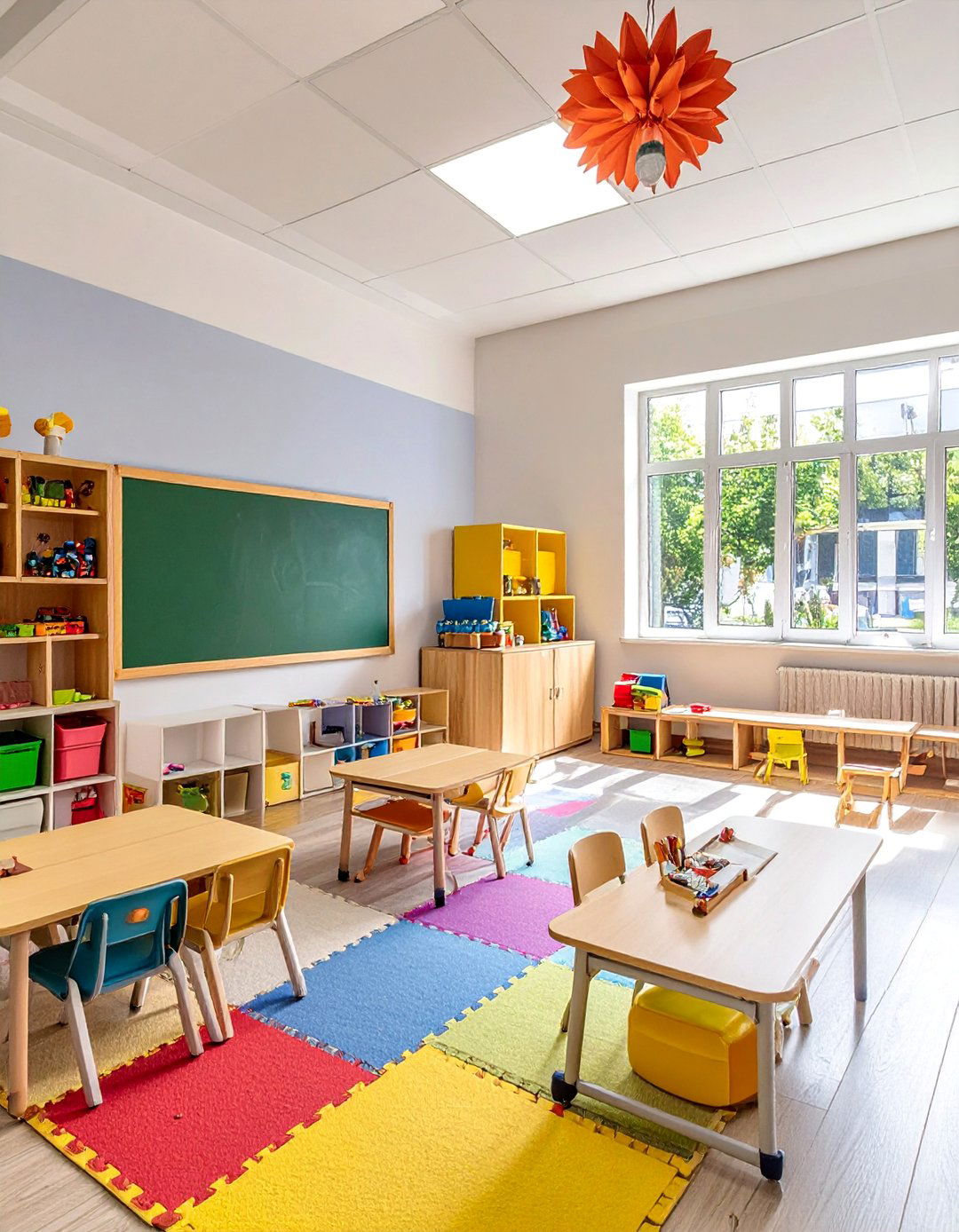
A classroom play area introduces academic concepts and school routines through educational play scenarios that prepare children for formal learning environments. Student desks, teaching materials, and school accessories create authentic educational environments while books about school introduce learning expectations. What subjects do you think would be most exciting to teach and learn? This zone encourages academic skills, social interaction, and learning behaviors while introducing concepts about education, following directions, and classroom cooperation. School play naturally incorporates academic skills, social rules, and learning concepts while providing opportunities for leadership development and educational exploration through engaging classroom adventures.
35. Construction Building Site
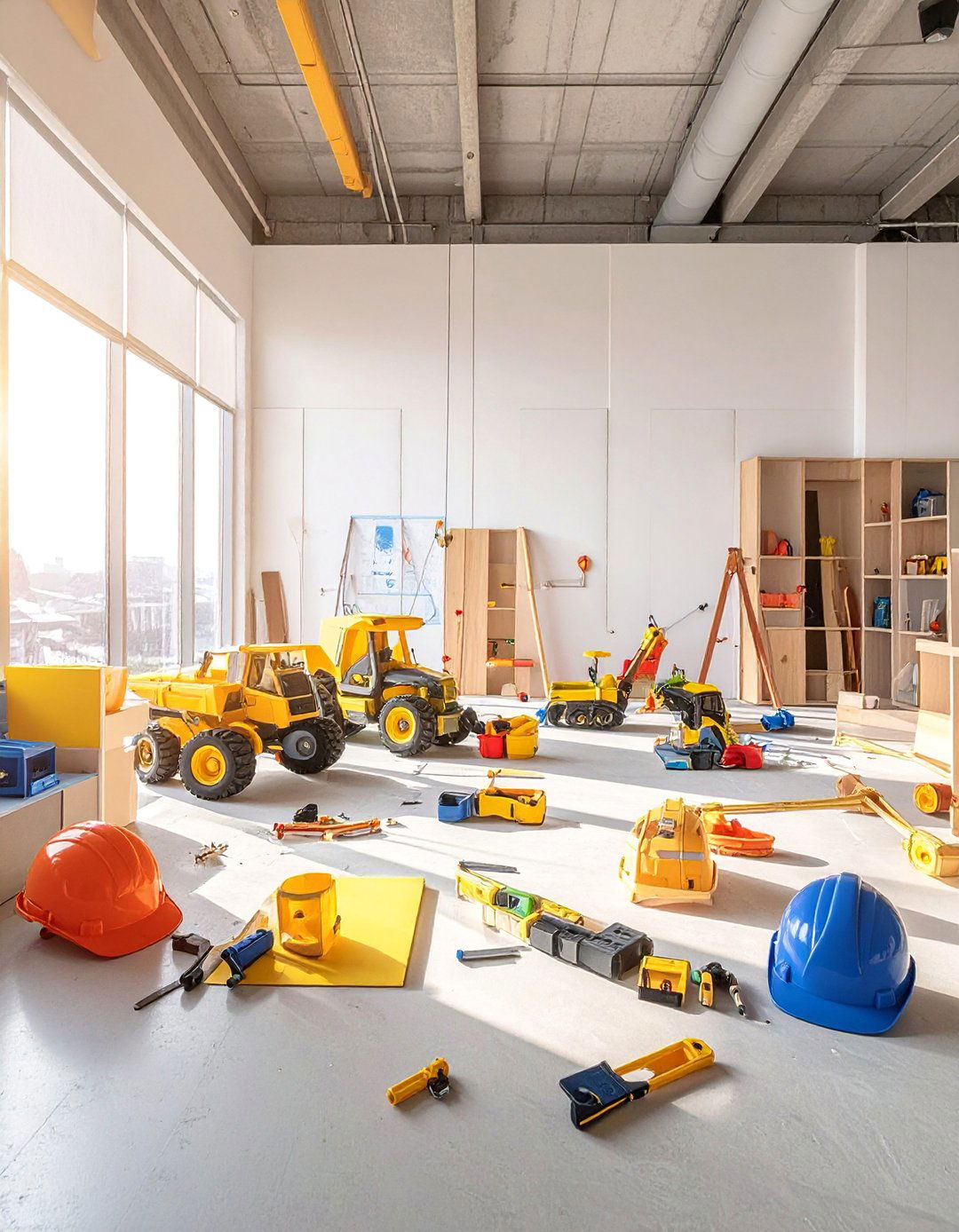
A construction-themed area introduces engineering concepts and building trades through hands-on construction play scenarios that develop problem-solving and building skills. Construction vehicles, building tools, and safety equipment create realistic building environments while books about construction introduce educational content. This zone encourages mechanical thinking, problem-solving skills, and safety awareness while introducing concepts about building trades, construction safety, and engineering principles. Construction play naturally incorporates measurement, planning, and teamwork skills while providing opportunities for large motor development and building confidence through engaging construction adventures and building projects.
36. Hair Salon Beauty Shop
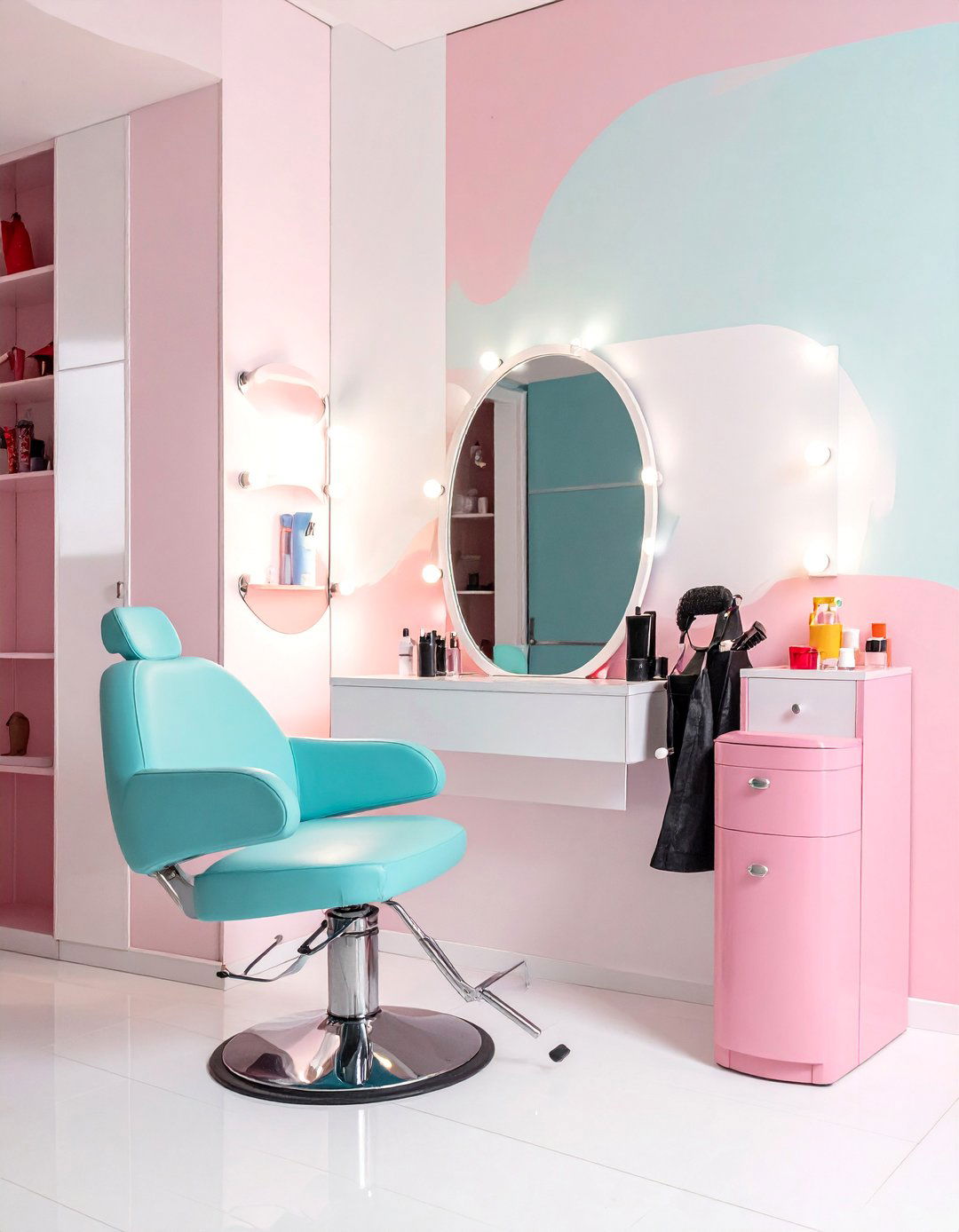
A beauty salon play area encourages self-care concepts and creative expression through grooming and styling play scenarios that build confidence and social skills. Salon chairs, styling tools, and beauty accessories create realistic salon environments while books about self-care introduce healthy habits. This zone encourages creativity, social interaction, and self-care concepts while introducing concepts about personal hygiene, professional services, and creative expression. Salon play naturally incorporates fine motor skills, creative design, and social cooperation while providing opportunities for nurturing play and beauty exploration through engaging salon adventures and styling activities.
37. Vet Animal Hospital
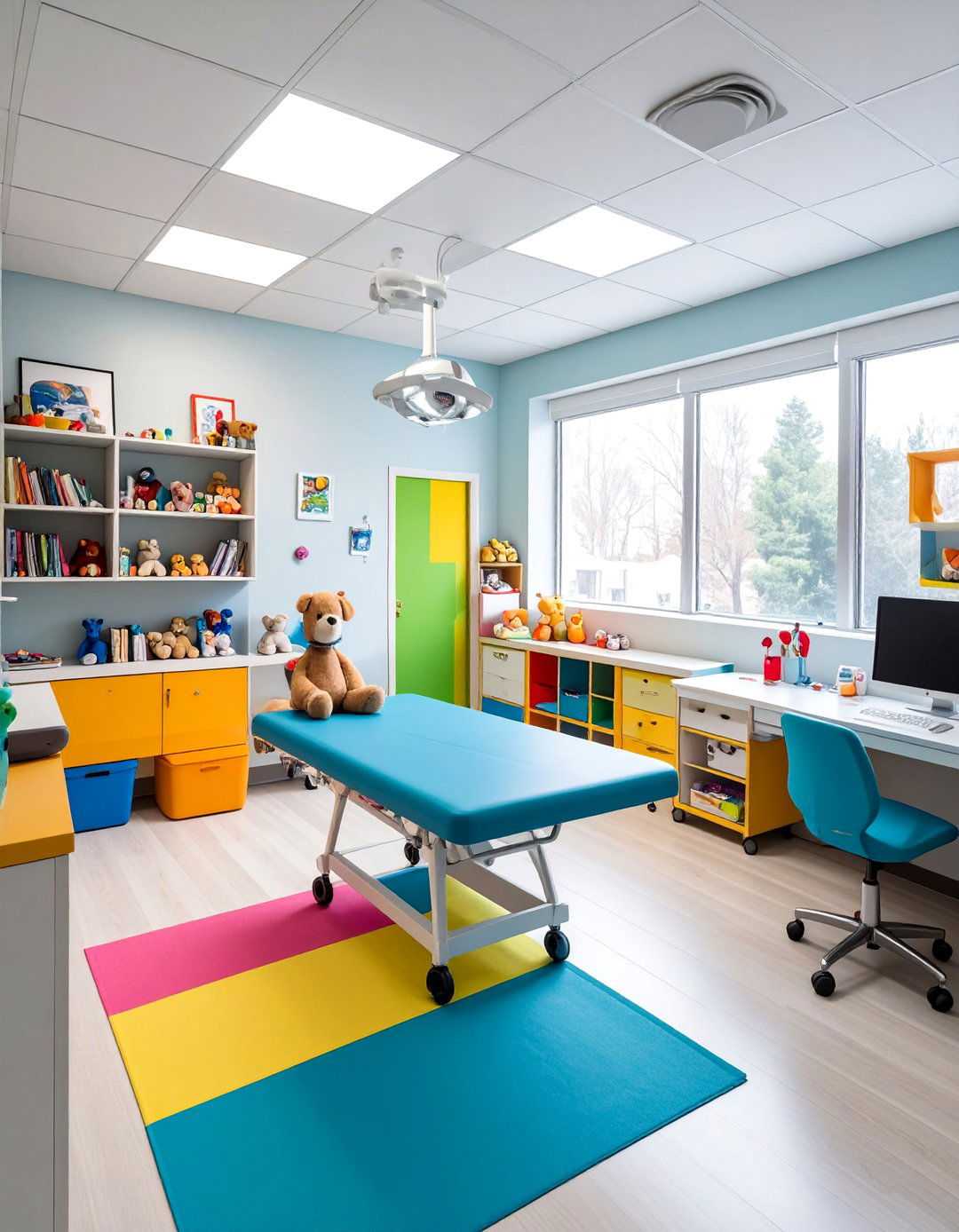
A veterinary play area teaches animal care and empathy through pet care scenarios that develop nurturing skills and scientific understanding about animals. Examination tables, medical tools, and stuffed animals create realistic veterinary environments while books about animals introduce educational content. How do veterinarians help keep our pets healthy and happy? This zone encourages empathy, scientific thinking, and animal care concepts while introducing concepts about animal health, veterinary careers, and responsible pet ownership. Veterinary play naturally incorporates observation skills, gentle handling, and caring behaviors while providing opportunities for nurturing play and animal understanding through engaging veterinary adventures.
38. Repair Workshop Fix-It
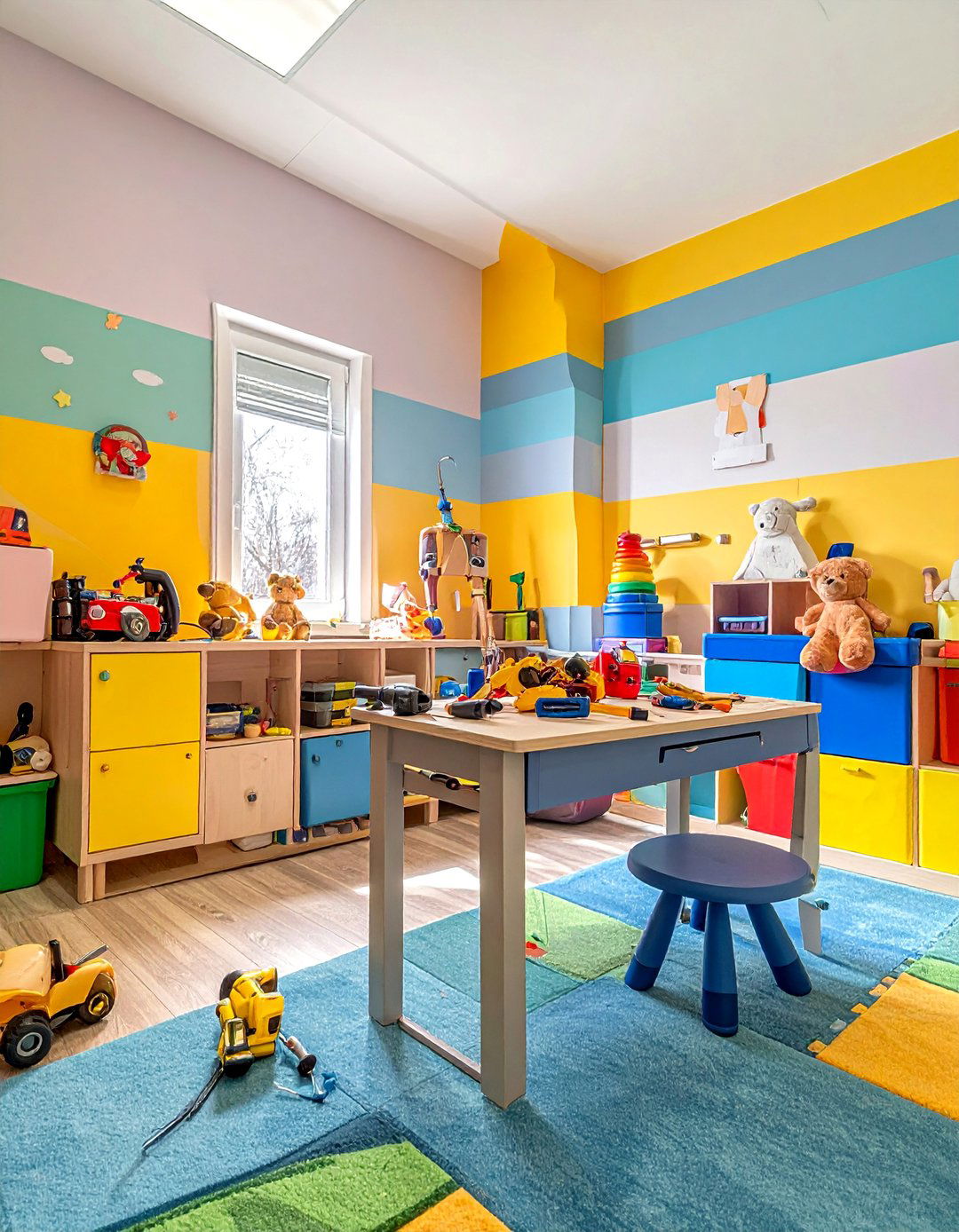
A repair workshop area introduces mechanical concepts and problem-solving through hands-on fixing and building scenarios that develop persistence and practical skills. Workbenches, tools, and broken toys create realistic repair environments while books about tools and fixing introduce educational content. This zone encourages problem-solving, mechanical thinking, and persistence while introducing concepts about maintenance, repair skills, and tool safety. Workshop play naturally incorporates fine motor skills, logical thinking, and creative solutions while providing opportunities for independent problem-solving and mechanical understanding through engaging repair adventures and building projects.
39. Weather Station Observatory
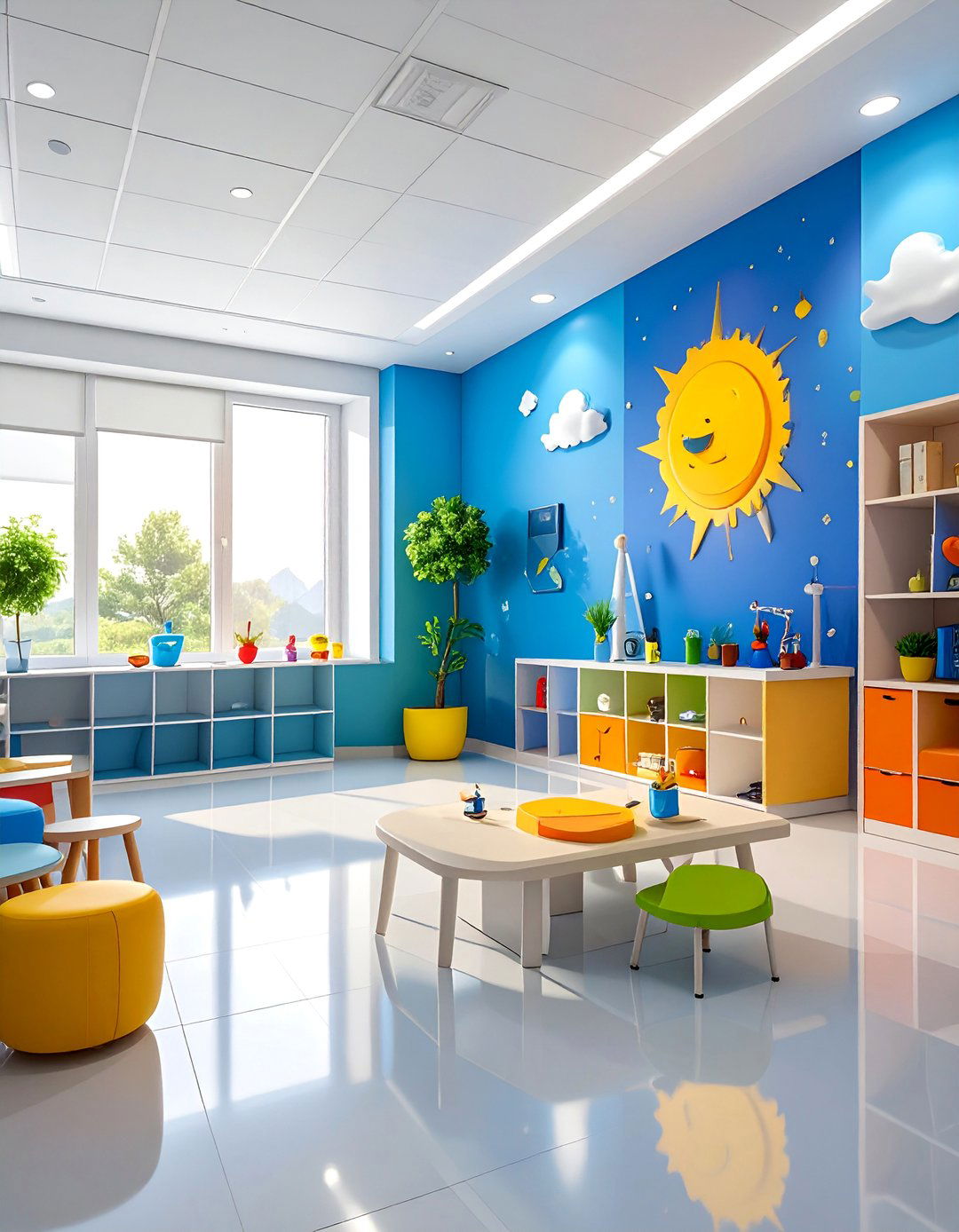
A weather station area introduces meteorology concepts and scientific observation through weather tracking and prediction activities that develop scientific thinking skills. Weather instruments, tracking charts, and weather accessories create realistic meteorological environments while books about weather introduce scientific content. What patterns do you notice in daily weather changes throughout the seasons? This zone encourages scientific observation, data collection, and pattern recognition while introducing concepts about meteorology, climate, and environmental science. Weather play naturally incorporates measurement, recording, and prediction skills while providing opportunities for scientific exploration and environmental understanding through engaging weather observation and forecasting activities.
40. Time Travel History
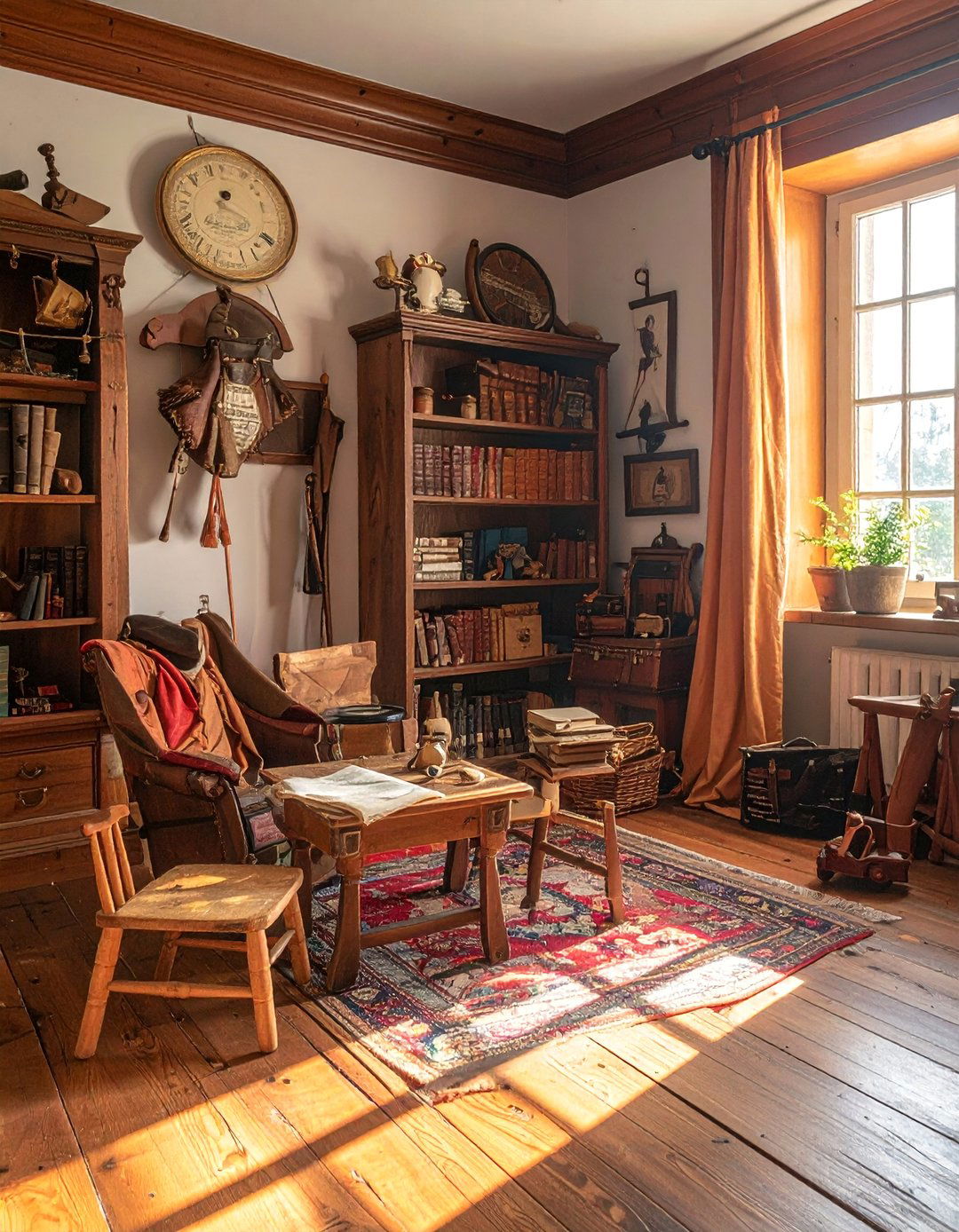
A time travel area introduces historical concepts and cultural awareness through period play scenarios that develop understanding of different eras and civilizations. Historical costumes, period accessories, and timeline materials create authentic historical environments while books about history introduce educational content. This zone encourages historical thinking, cultural awareness, and timeline understanding while introducing concepts about different time periods, historical events, and cultural traditions. Historical play naturally incorporates chronological thinking, cultural comparison, and historical empathy while providing opportunities for dramatic play and historical exploration through engaging time travel adventures and cultural discovery activities.
Conclusion:
These forty playroom ideas offer endless possibilities for creating spaces where children learn, grow, and thrive through purposeful play experiences. Whether you implement one zone or combine multiple areas, remember that the best playrooms evolve with your children's changing interests and developmental needs. Focus on safety, accessibility, and flexibility while choosing ideas that match your family's lifestyle and space limitations. The magic happens when children feel ownership of their play environment and can independently explore, create, and discover. Start small, observe what captures your child's imagination, and gradually build the playroom that becomes their favorite place to learn and grow.

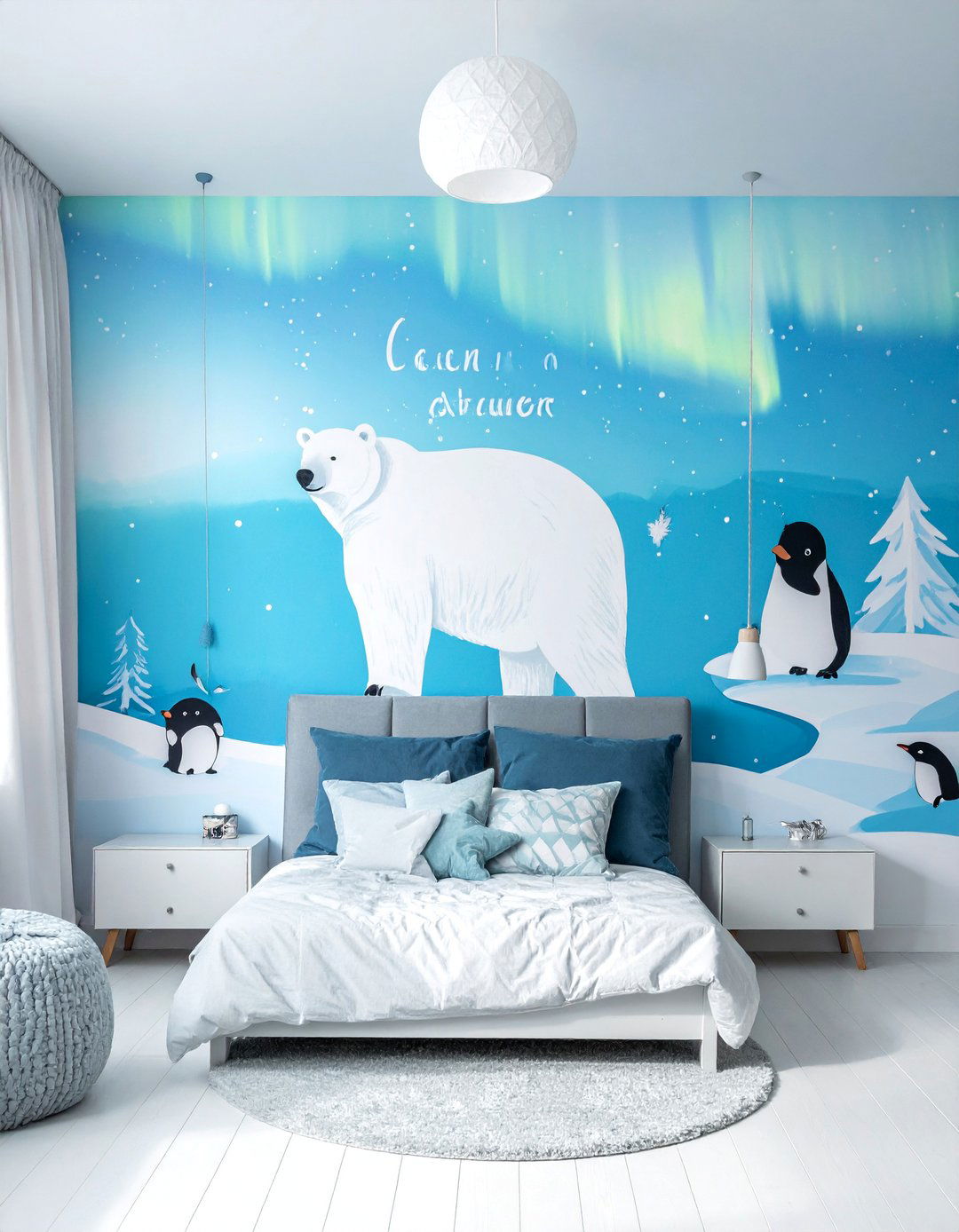

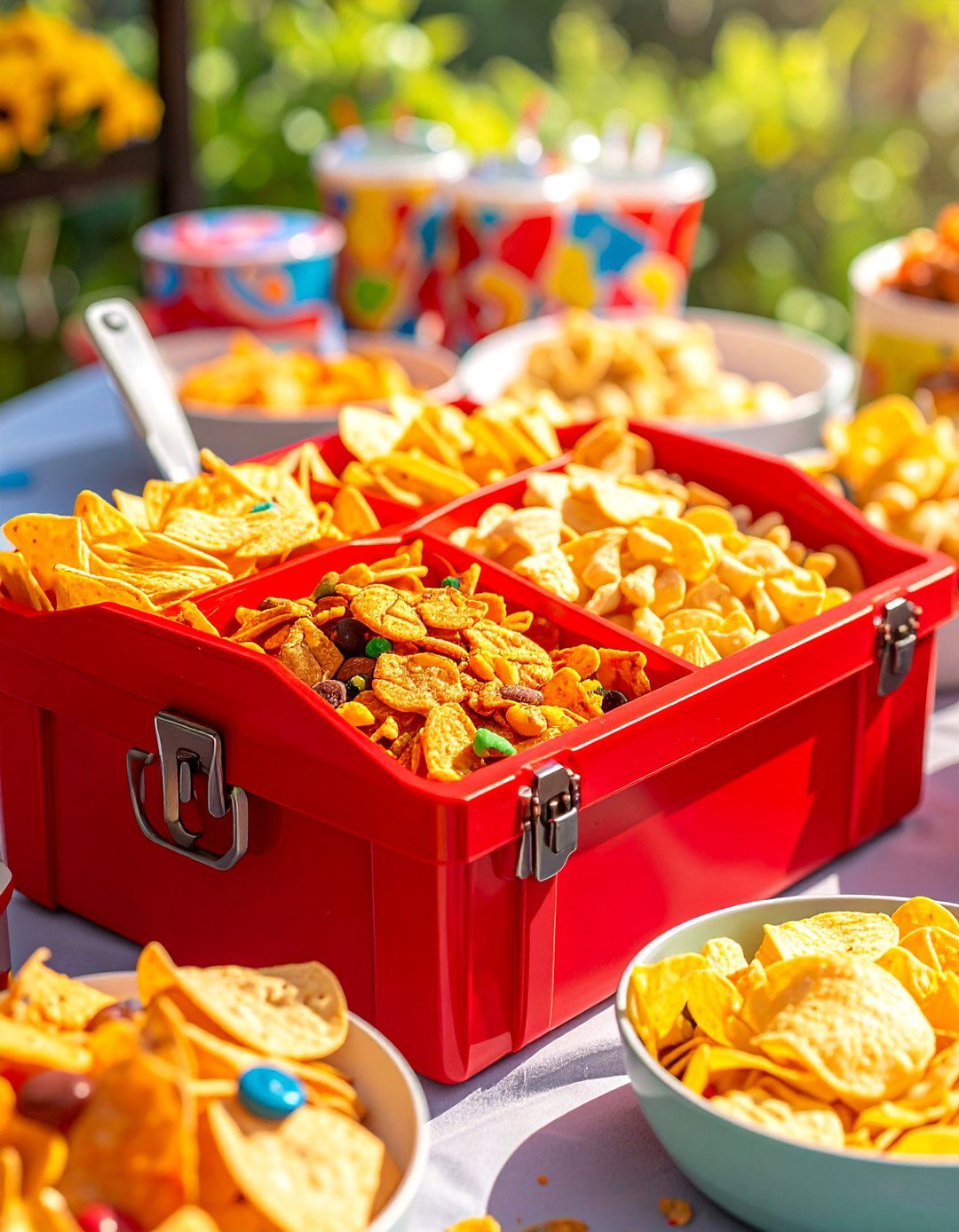
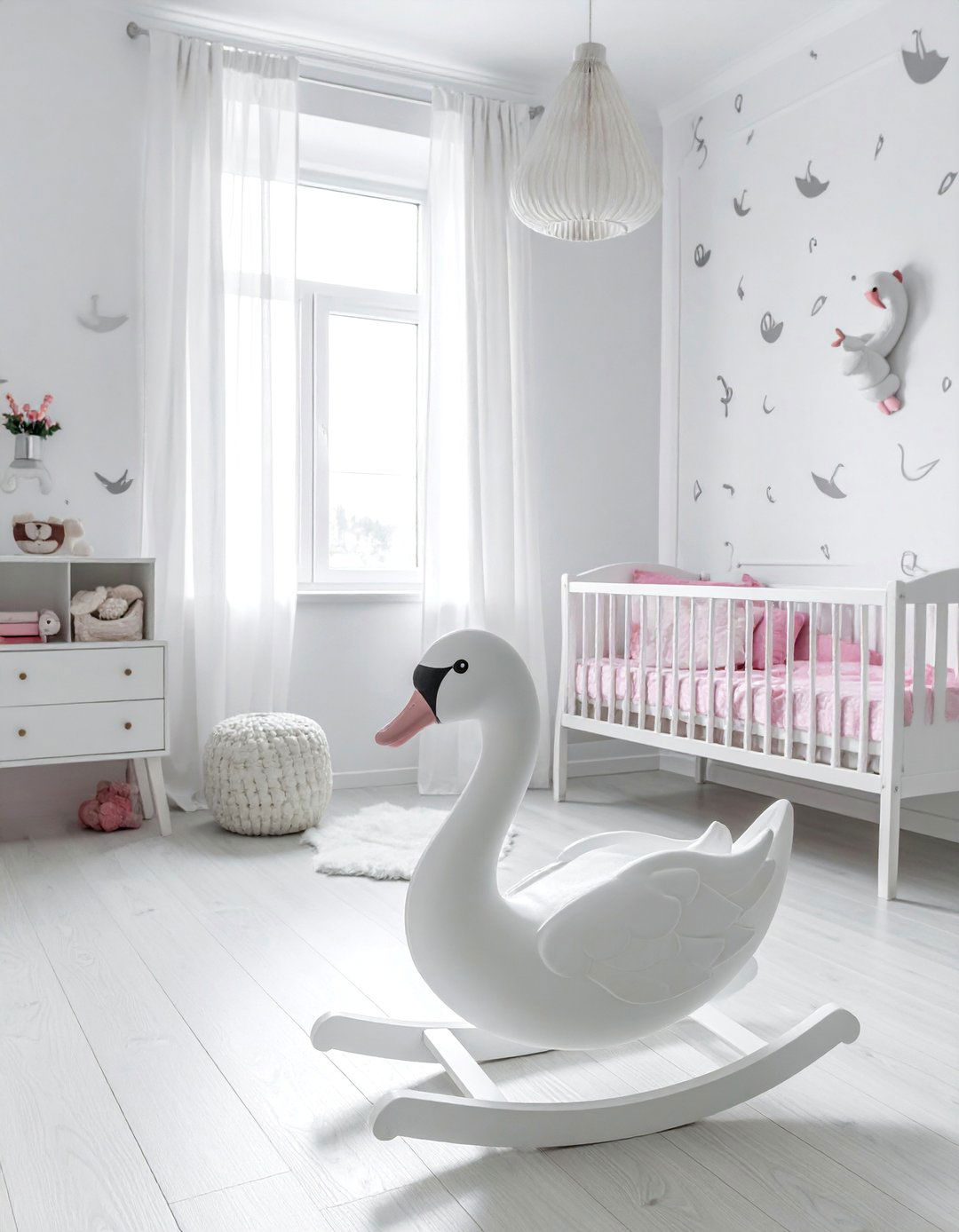
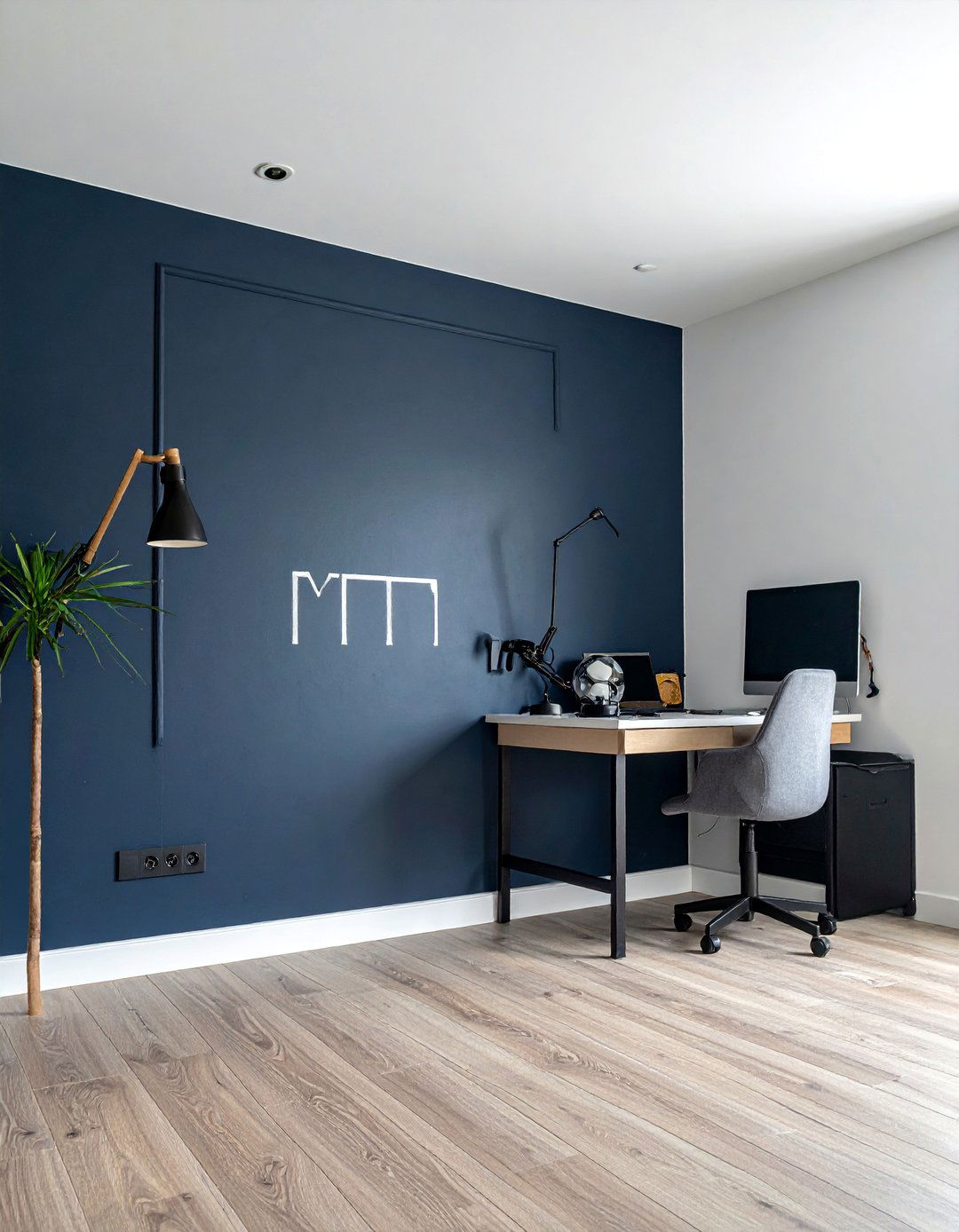

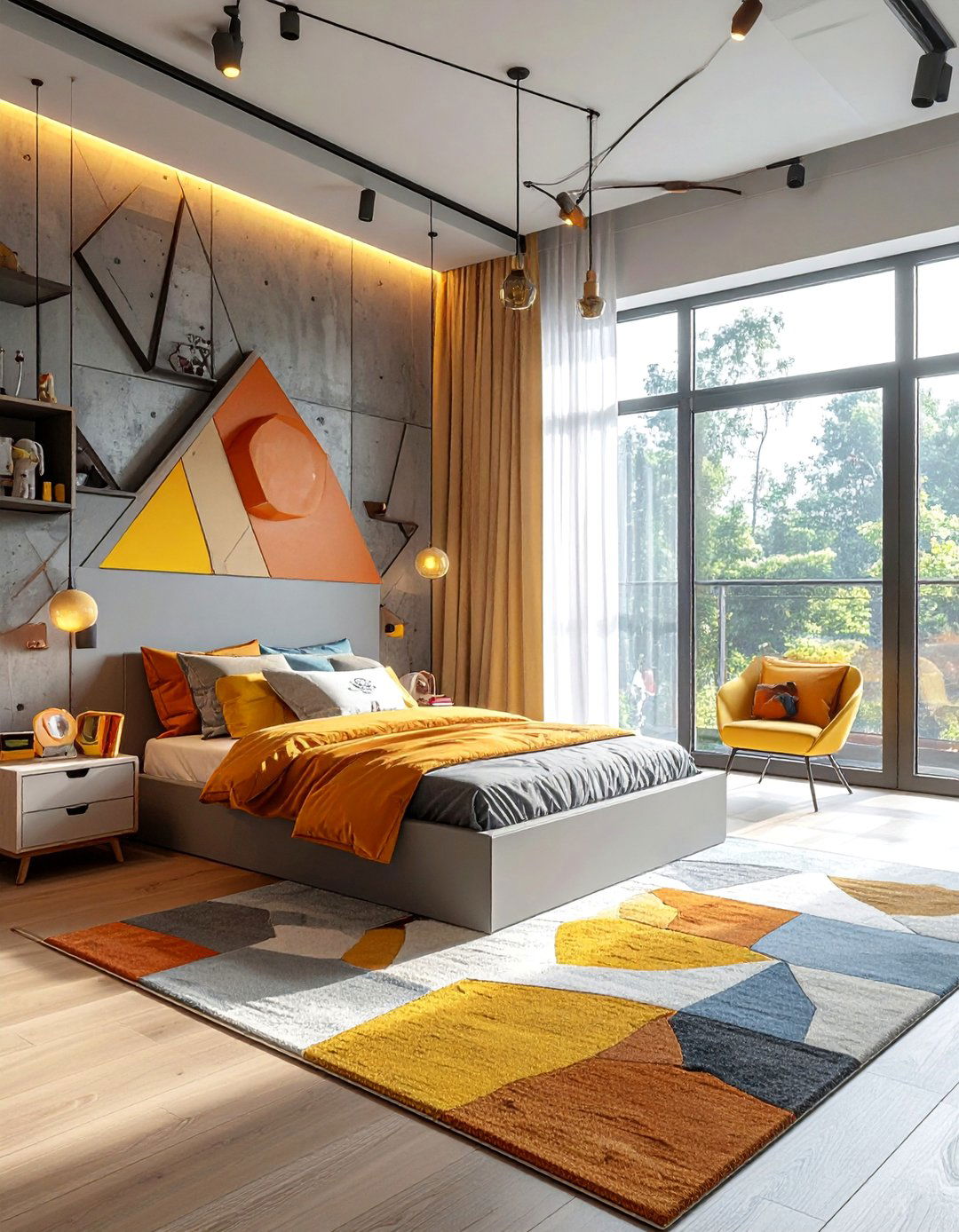
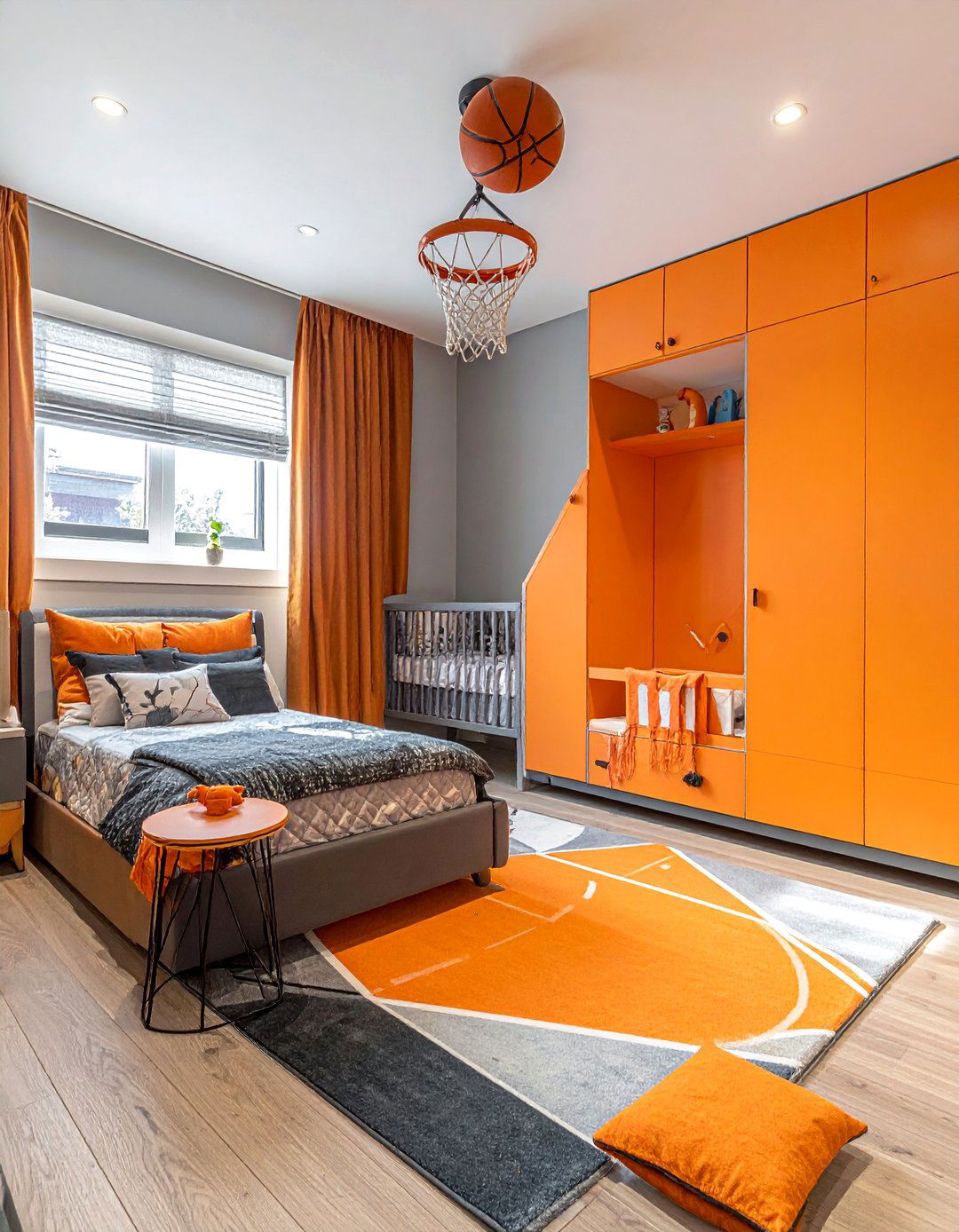
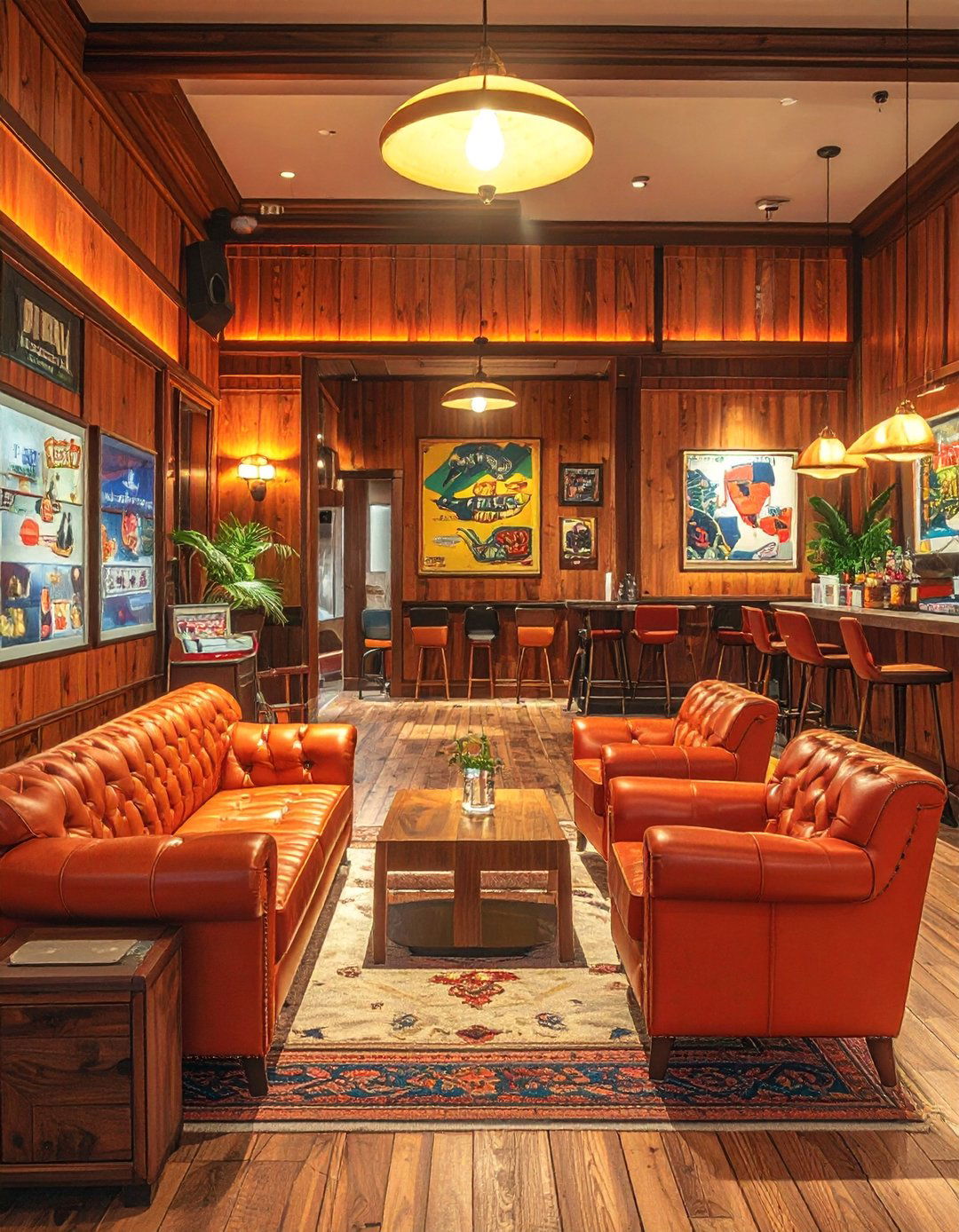
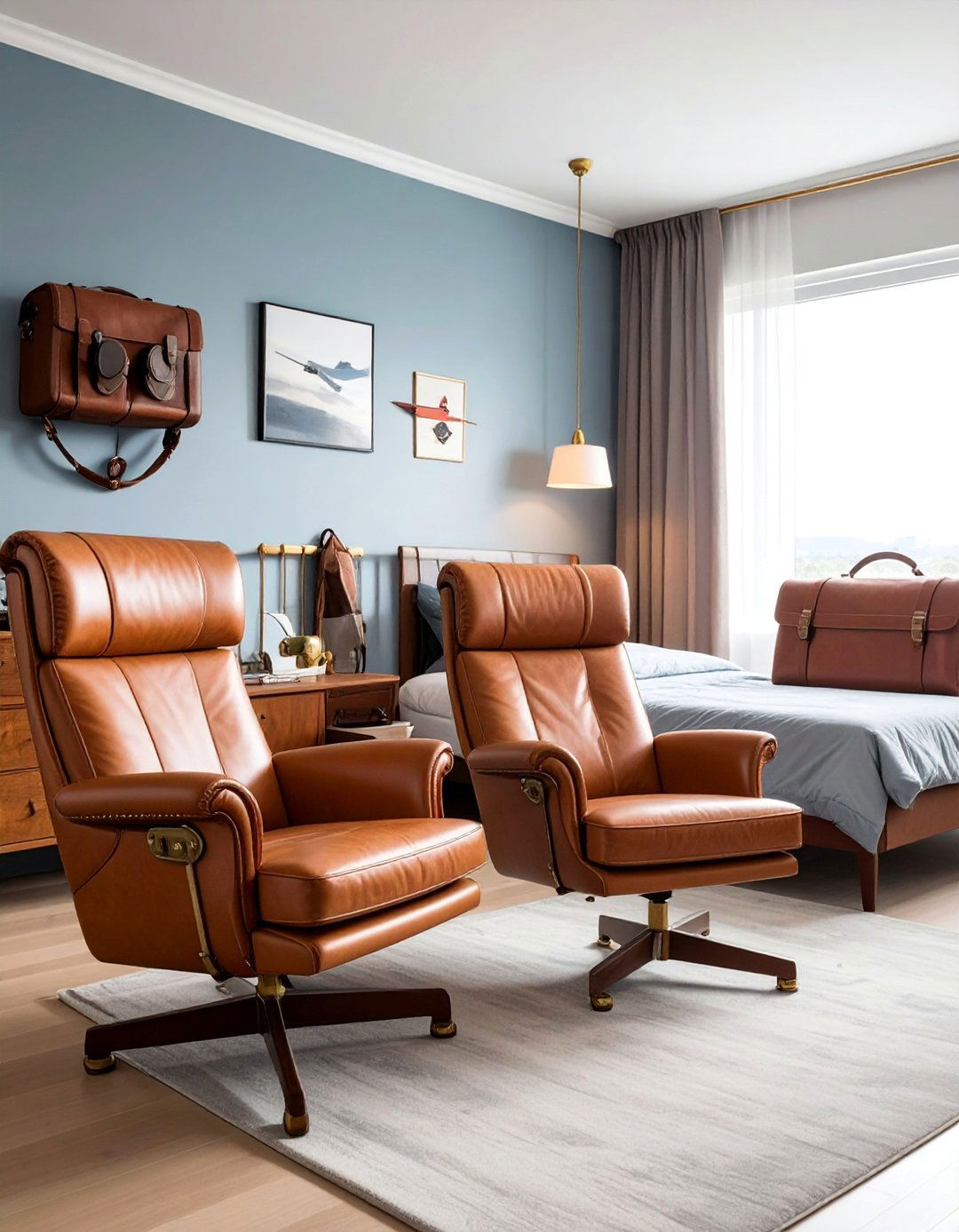
Leave a Reply